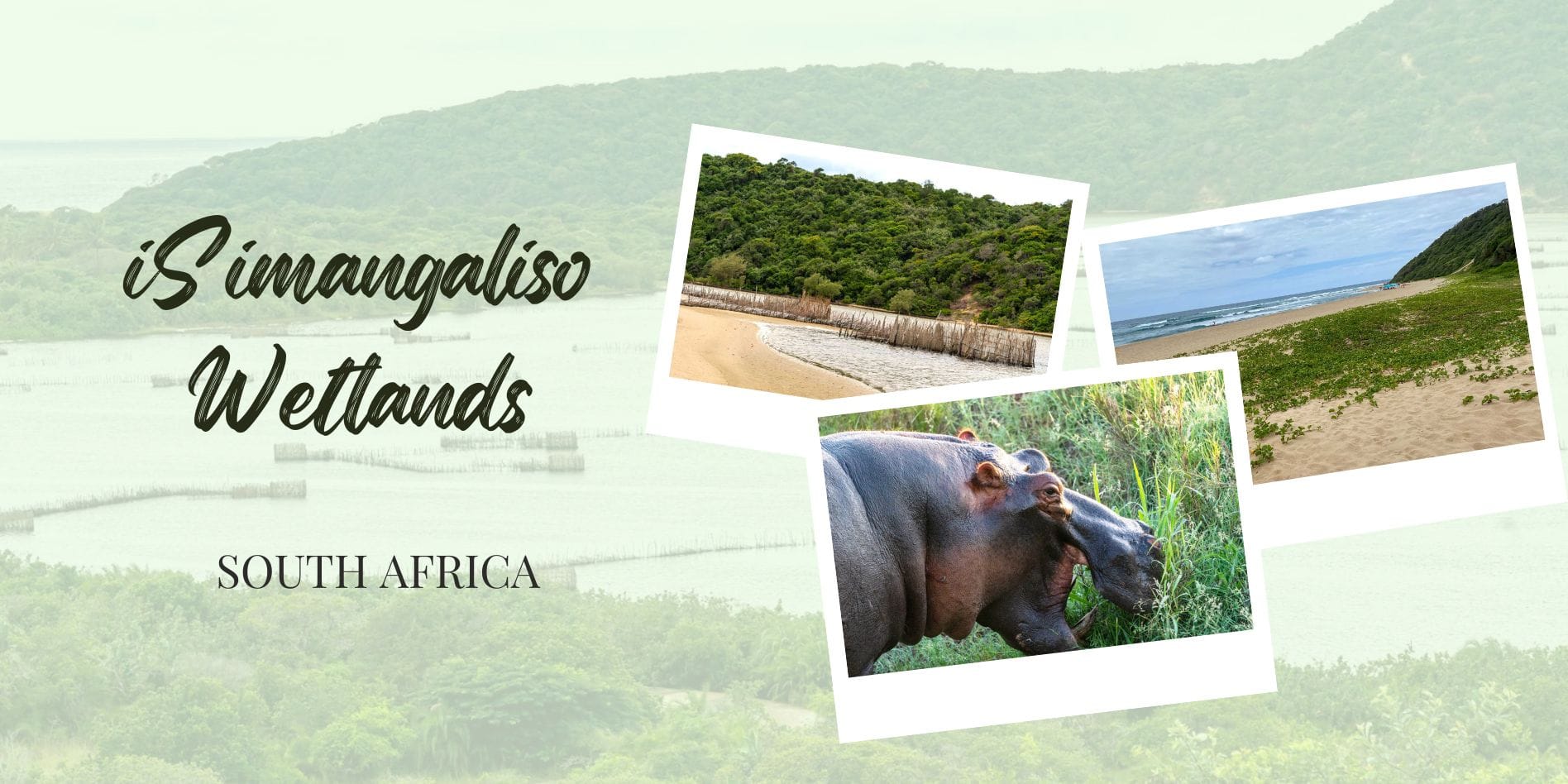Looking for activities to do in iSimangaliso Wetland Park?
This guide is packed with things to do in iSimangaliso Wetlands and includes both self-drive and guided tour opportunities as well as plenty of photos of our iSimangaliso Wetland Park.
We’d heard iSimangaliso Wetlands was a must-visit place while travelling in South Africa. In fact, many South Africans swoon when you mention St. Lucia or Kosi Bay, the two main hubs in the Wetlands.
Having already lost our hearts to Greater Kruger and its incredible wildlife, it was always going to be a tough call for iSimangaliso to compete.
Although our hearts remain true to our well-loved area of the northeast of South Africa, namely both Kruger and Klaserie Nature Reserves, iSimangaliso Wetland Park activities provide a wealth of experiences.
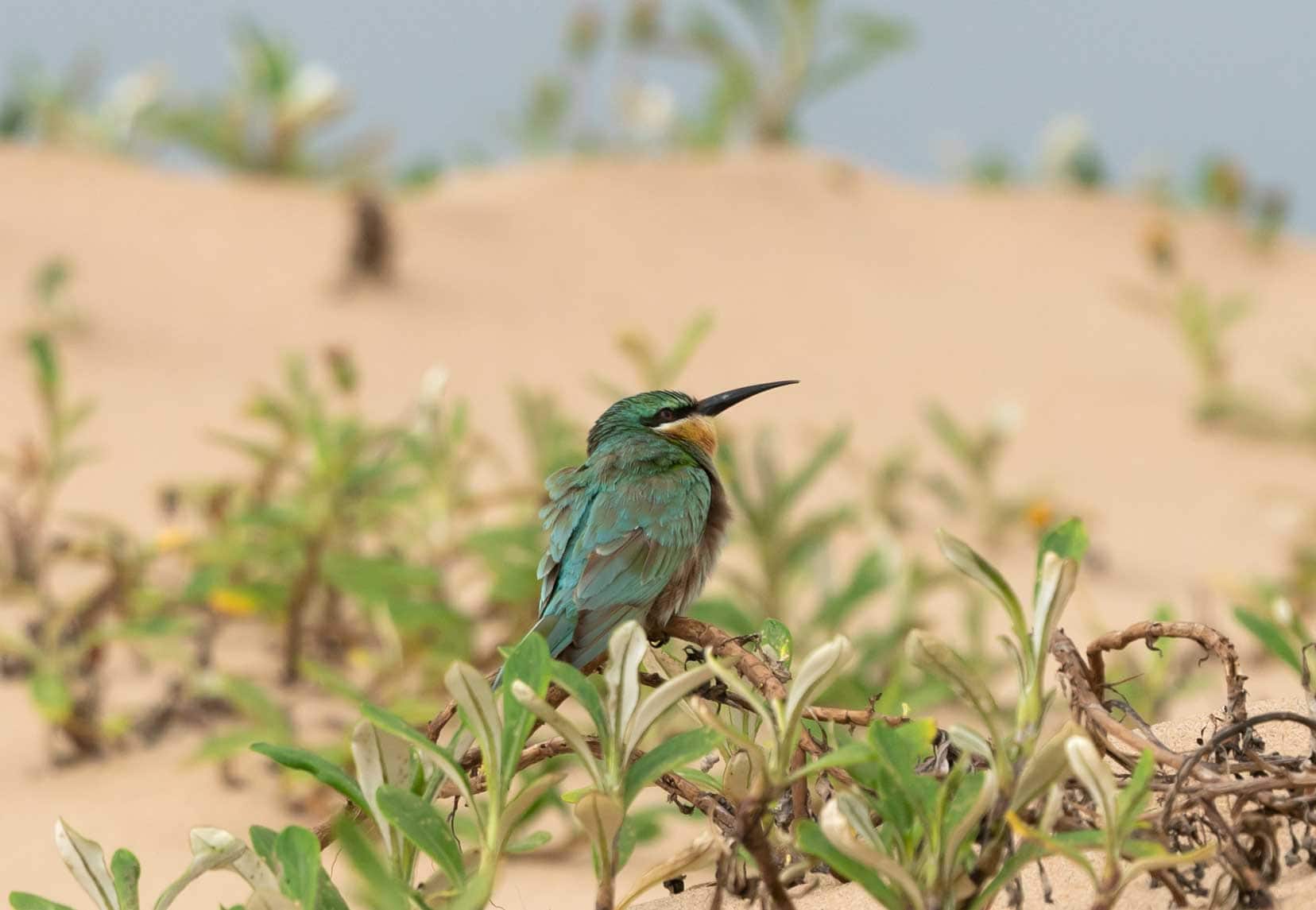
Summary of Activities to do at Isimangaliso Wetland Park
- Explore St Lucia Estuary and Beach: Walk along a wooden pathway to the sand dunes, spot seabirds, and fish near the estuary mouth.
- Day Trip Through the Eastern Shores, St Lucia: Experience diverse landscapes and spot wildlife like buffalo and white rhinos.
- Visit Cape Vidal: Enjoy family-friendly beaches and snorkelling tours offering rich marine life.
- Mission Rocks: Popular for fishing and exploring rock pools at low tide.
- Take a Guided Walking Tour in St. Lucia Eastern Shores: Learn about the region’s birdlife and Zulu culture.
- Take a Safari Tour to Hluhluwe-Imfolozi Park: Visit Africa’s oldest game reserve, famous for its rhino conservation efforts.
- Take a Turtle Spotting Tour: Seasonal tours to observe Leatherback and Loggerhead turtles laying eggs.
- Visit the Crocodile Centre, St. Lucia: A facility offering insights into the local crocodile population.
- Visit uMkhuze Game Reserve: Explore diverse birdlife and iconic African wildlife.
- Stop off at Lake Sibaya: Enjoy the tranquillity of this important wetland home to hippos and crocodiles.
- Mabibi Beach: Offers camping spots and is a nesting site for turtles.
- Explore Kosi Bay: A popular area for fishermen and snorkelers.
- Snorkelling at Kosi Bay River Mouth: Discover diverse marine life in a natural ‘aquarium’.
- Fish Kraals of Kosi Bay: Learn about local fishing traditions and enjoy a kayak and snorkel tour.
- Take a Kosi Bay Mouth Kayak and Birdwatching Tour: Explore the estuary’s mangroves and birdlife with a local guide.
- Visit Tembe Elephant Park: Home to some of Africa’s largest elephants.
ISimangaliso Wetlands Park in a Nutshell
Best Time to Visit: May to July for quieter visits, less intense heat, fewer mosquitoes, and less wind. December is peak season with more crowds.
Health Tips: The area is low-risk for malaria. Use mosquito repellent and wear light-coloured clothing with long sleeves and pants in the early morning and evening. Consider taking malaria prophylactics.
Park Entrance Fees: Prices vary by gate. Permits are required for certain areas like the Eastern Shores and Kosi Bay Lakes. Buy permits at the KZN Ezemvelo office at Third Lake.
Driving Conditions: A 4×4 vehicle is recommended. Watch out for potholes, speed bumps, and wandering livestock. Get local advice on the best roads.
Safety Guidelines: Follow park rules, keep a safe distance from wildlife, and don’t feed animals.
Accommodation: Book early for summer and holiday periods. Options range from camping to luxury lodges.
- St.Lucia: African Ambience Guest House B&B
- Kosi Bay: Kosi Bay Casitas
Travel Tips: From Durban, it’s a 3-hour drive to St. Lucia and 5 hours to Kosi Bay. From Johannesburg, it’s about 8 hours. Consider a halfway stop at Welveriend B&B in Piet Retief.
Essential Gear: Mosquito repellent, sun protection, and a first-aid kit. The water at campsites and lodges is drinkable.
Short on Time? Our Top Popular Activities Include:
🌊 For Water Activity Enthusiasts:
- 🤿 Snorkelling at Kosi Bay River Mouth: Discover the vibrant underwater world where the river meets the sea. ⭐️ 5/5 | 6 hours
- 🦛 St Lucia: Hippo and Crocodile Cruise: Cruise the estuary of St Lucia, spotting hippos and crocodiles along the banks. ⭐️ 4.5/5 | 2 hours
🌲 For Nature Lovers:
- 🐘 Safari Tour to Hluhluwe-Imfolozi Park: Explore the home of the Big Five and witness the rich biodiversity of South Africa’s oldest nature reserve. ⭐️ 4.7/5 | 6.5 to 8.5 hours
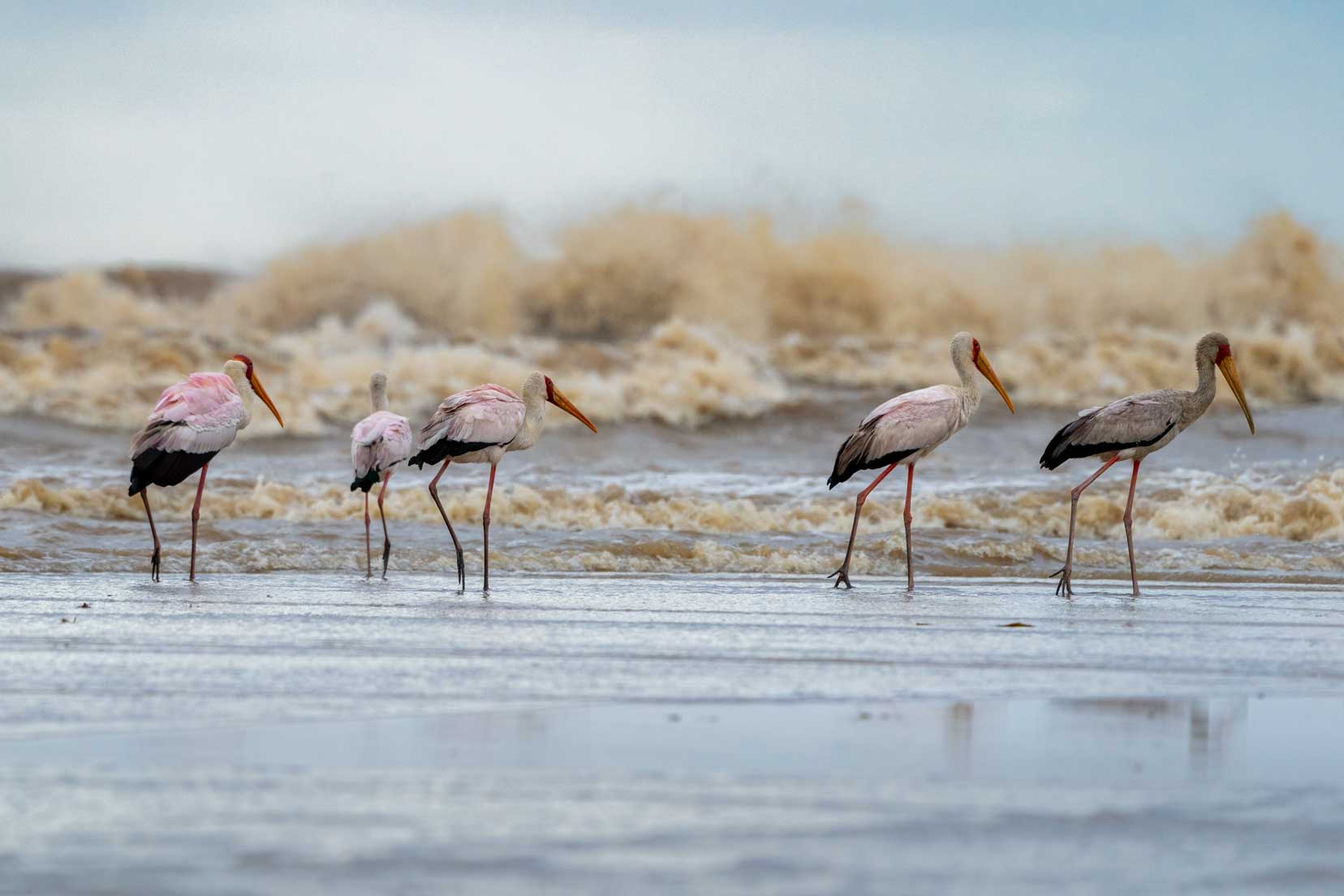
iSimangaliso Wetlands Park
In and around the iSimangaliso Reserve, you can combine wildlife safari encounters with beach life and can literally dive into the underwater marvels on snorkelling adventures.
Thousands of South Africans flock to the area for their summer holidays – a tell-tale sign that this is one of the country’s precious gems.
💡OUR TIP: If you plan to visit in summer — particularly over the Christmas period and school holiday times — book accommodation early.
If you love beaches, snorkelling and admiring pristine scenery, head to the iSimangaliso Wetlands for a combination of safari and surf experiences and self-drive and iSimangaliso wetland park tours.
Planning a Trip to South Africa?
- 🚗 Hiring a car? We recommend getting a quote from DiscoverCars
- 🚐 Hiring a campervan? We recommend Motorhome Republic
- ⛑ Arranged your travel insurance? Compare quotes from World Nomads & Safetywing
- 🪪 Order your International Driver’s Licence online here
- 🏩 Booked your accommodation? We use Booking.com to find the best deals
- 🐾 Is someone pet-sitting for you? 🐾 We use and love TrustedHousesitters
- (Get 25% off at checkout for new memberships with our discount code: LIFEJOURNEY25)
Where is ISimangaliso Wetland Park?
iSimangaliso Wetland Park, a UNESCO World Heritage site, is found along the stunning coast of South Africa’s KwaZulu-Natal Province.
This remarkable area stretches from the small town of St. Lucia in the south to the Mozambique border in the north. Encompassing around 3,280 square kilometres, it’s a mosaic of ecosystems, including dunes, wetlands, coral reefs, and coastal forests.
The park is easily accessible by road from major cities like Durban, which is approximately 200 kilometres away.
Map: iSimangaliso Wetland Park Showing Numbered Activity Locations
🎥 Video: Sneak Peek of iSimangaliso Wetland Park
Take a peek at some of our video snippets and pics from our stay in St. Lucia and the things we saw on the drive through iSimangaliso Wetland Park.
16 iSimangaliso Wetland Park Activities to Enjoy
The iSimangaliso Reserve activities listed here are focused on the two main activity hubs of iSimangaliso: St. Lucia in the south and Kosi Bay in the north.
iSimangaliso is the largest estuary and coastal reserve in South Africa. It is particularly known for its diverse wildlife, particularly loggerhead and leatherback turtles, which lay their eggs here.
Lake St. Lucia, with its mixture of salt and freshwater, supports a huge variety of wildlife.
Here, you’ll find hippos, crocodiles, many species of antelope, birds, waterbirds, frogs, and coral reefs with a multitude of colourful fish.
In fact, in the town of St Lucia, hippos often wander the streets at night!
Further north, in Kosi Bay, this area of iSimangaliso is a popular fishing and snorkelling spot.
Both areas have wildlife nature reserves nearby, which are home to the Big Five and other iconic African wildlife.
So, whether you love the ocean and wildlife or are keen on a safari to spot the Big Five, the iSimangaliso wetlands have plenty of things to see and do to keep you busy.
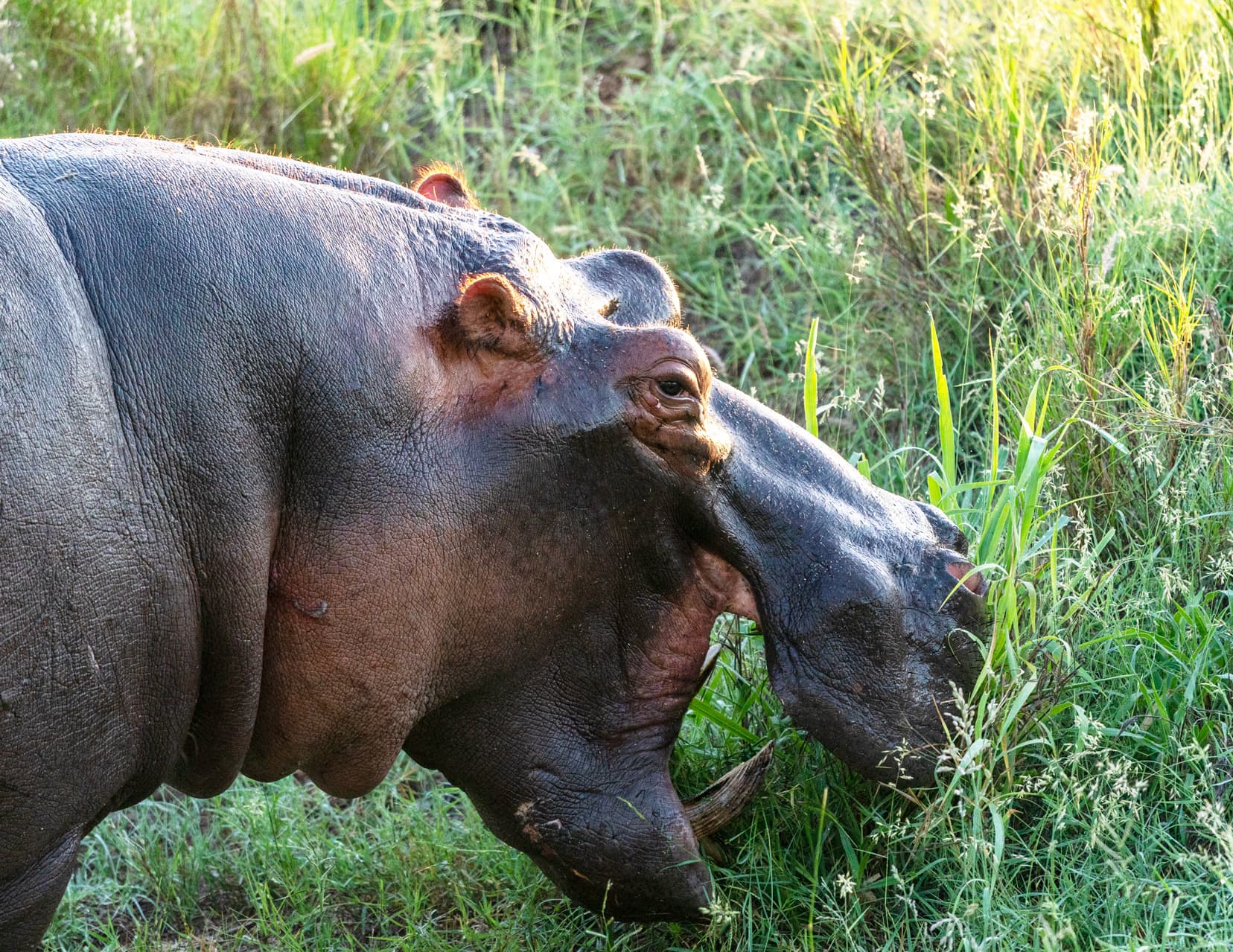
1. Explore St Lucia Estuary and Beach
Just at the end of the town, head towards St Lucia Beach and Estuary.
Here, you can take a walk along a wooden pathway through the trees to the vast sand dunes of St. Lucia’s long sandy beach. Towards the mouth of the estuary, you will likely spot waders and seabirds.
Board signs at the beginning of the trail will remind you to keep an eye out for hippos and crocodiles. We saw neither on our jaunts to the beach.
What we did see, though, were loads of bee-eaters flitting around the sand dunes and yellow-billed storks fishing for breakfast in the shallows near the estuary mouth.
This is also a popular fishing area, but you will need a fishing permit, which can be bought from the St. Lucia Post Office.
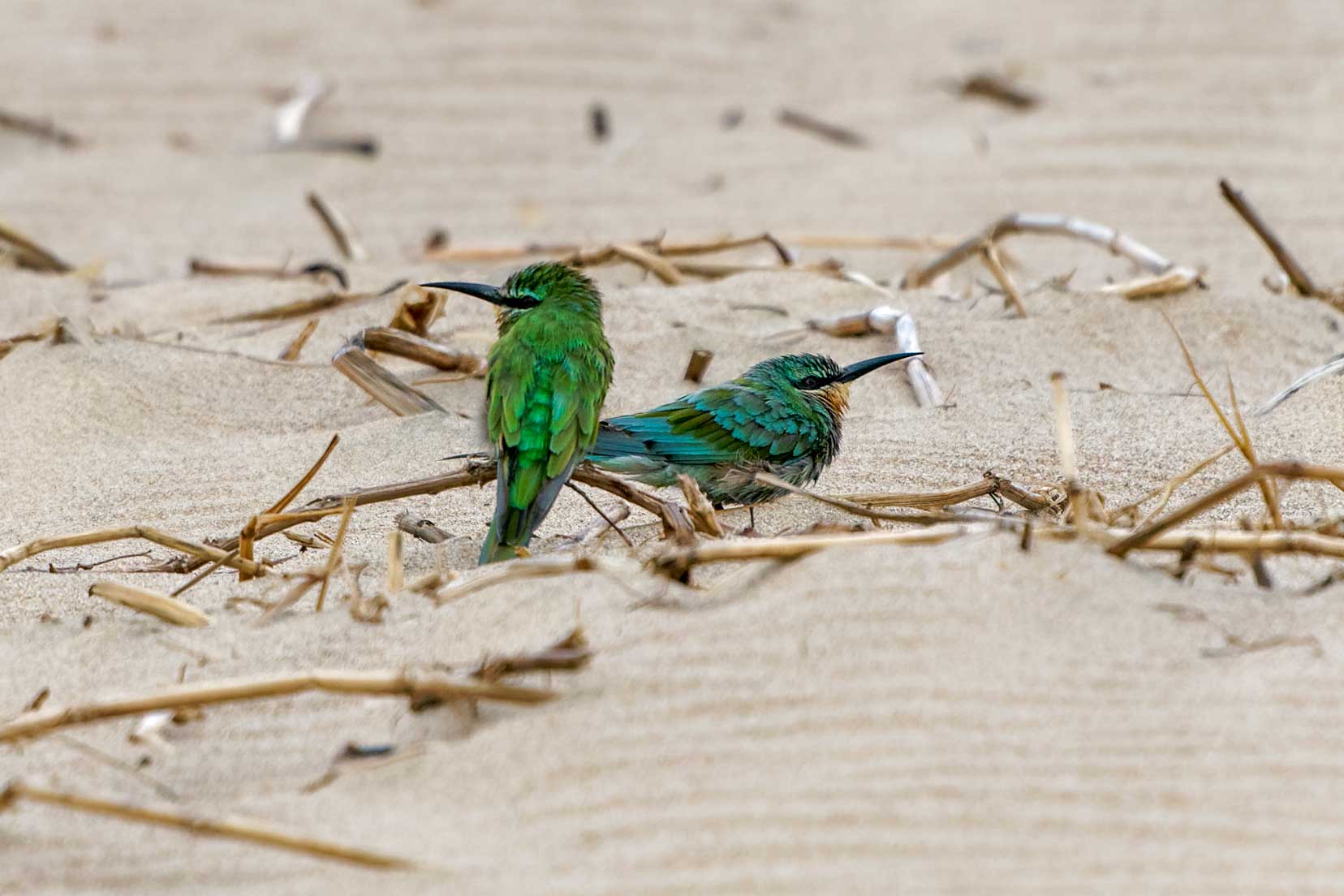
2. Day Trip Through the Eastern Shores, St Lucia
The gate to the Eastern Shores of iSimangaliso Wetlands is Bhangazi Gate, beside the Crocodile Centre, just outside of St. Lucia town.
Make sure you haven’t got any alcohol on board because it is illegal to take it into the park. Roadblocks are set up for searches of vehicles just before you get to the car park.
Once in the car park, just before Bhangazi Gate, head into the gate reception office, where you can buy a permit to enter the reserve.
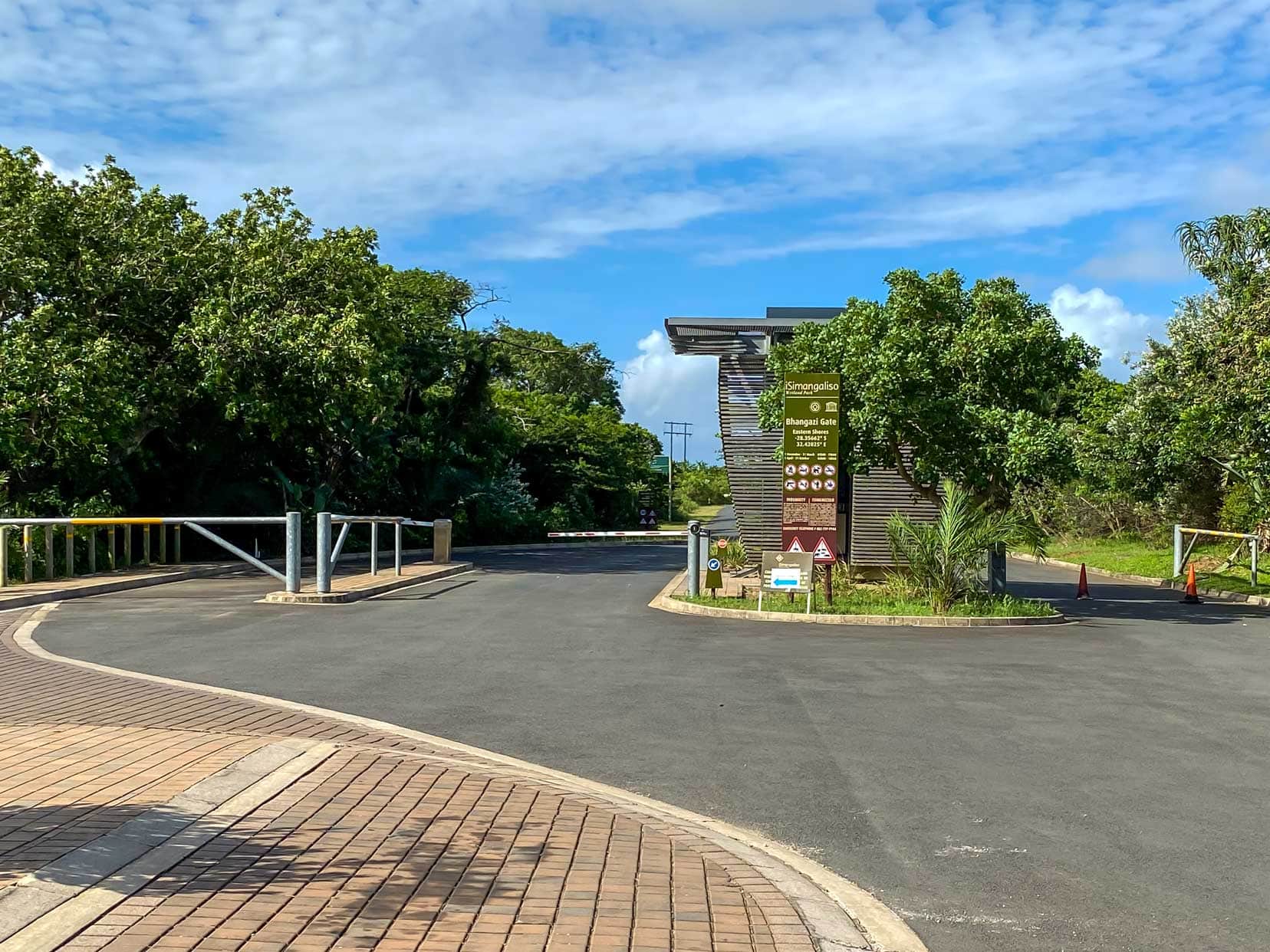
The drive through the Eastern Shores is one of our favourite iSimangaliso wetland park attractions. You’ll find a variety of landscapes, with lots of sandy tracks and loops off the main road for exploring more of the park.

En route through the Eastern Shores, we came across a herd of buffalo resting in the long grasses and were lucky enough to see a white rhino very close to the main road.
Read More:
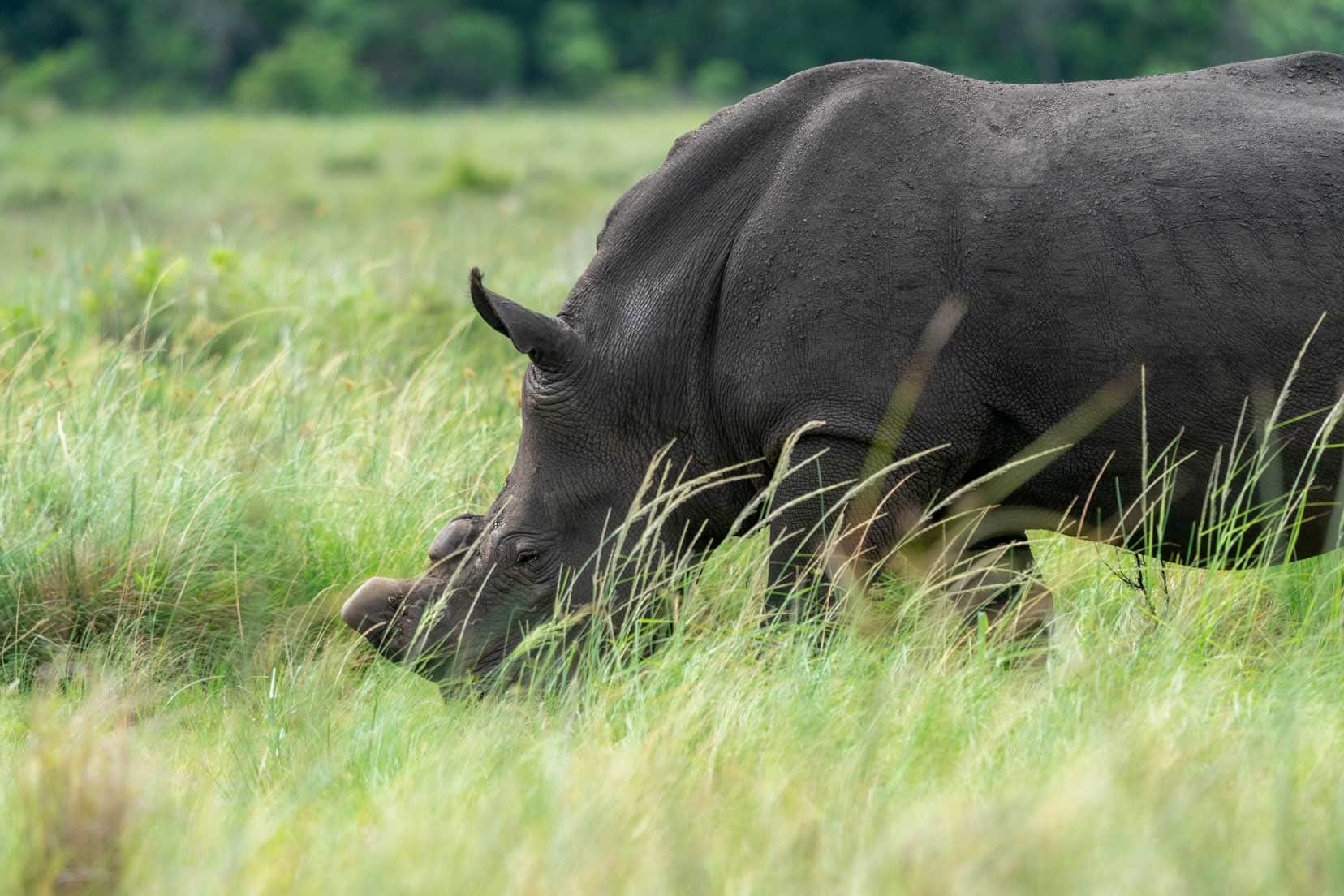
At one viewing point, we jumped out of the car and were bemused by what seemed like a trio of bugs flying by. On closer inspection, it was a dragonfly with wings that gave the impression that it was three separate bugs when flying.
Also, on the path, we spotted a red-backed spider – a common but dangerous spider we often see in Australia – I’m guessing that this one may be venomous too.
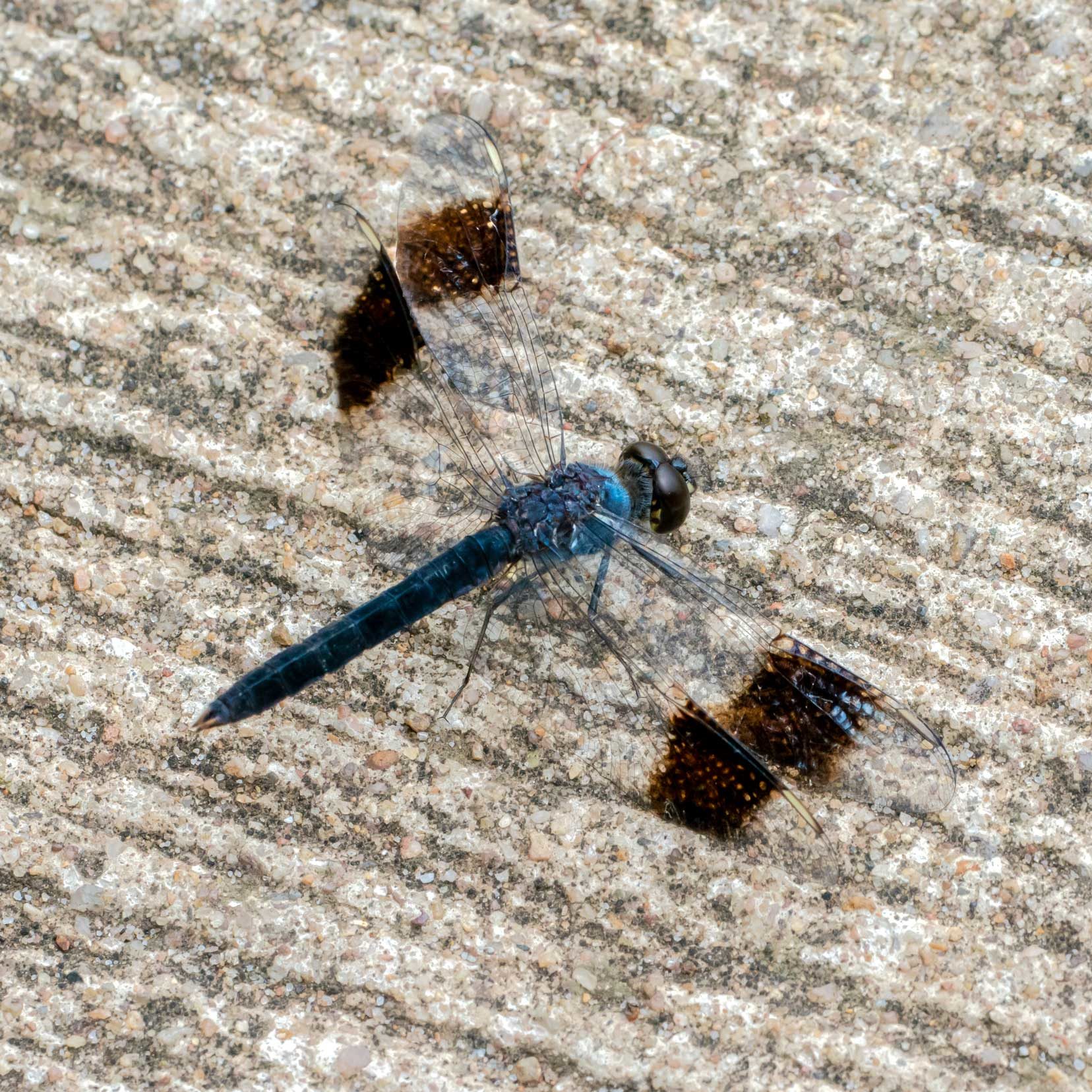
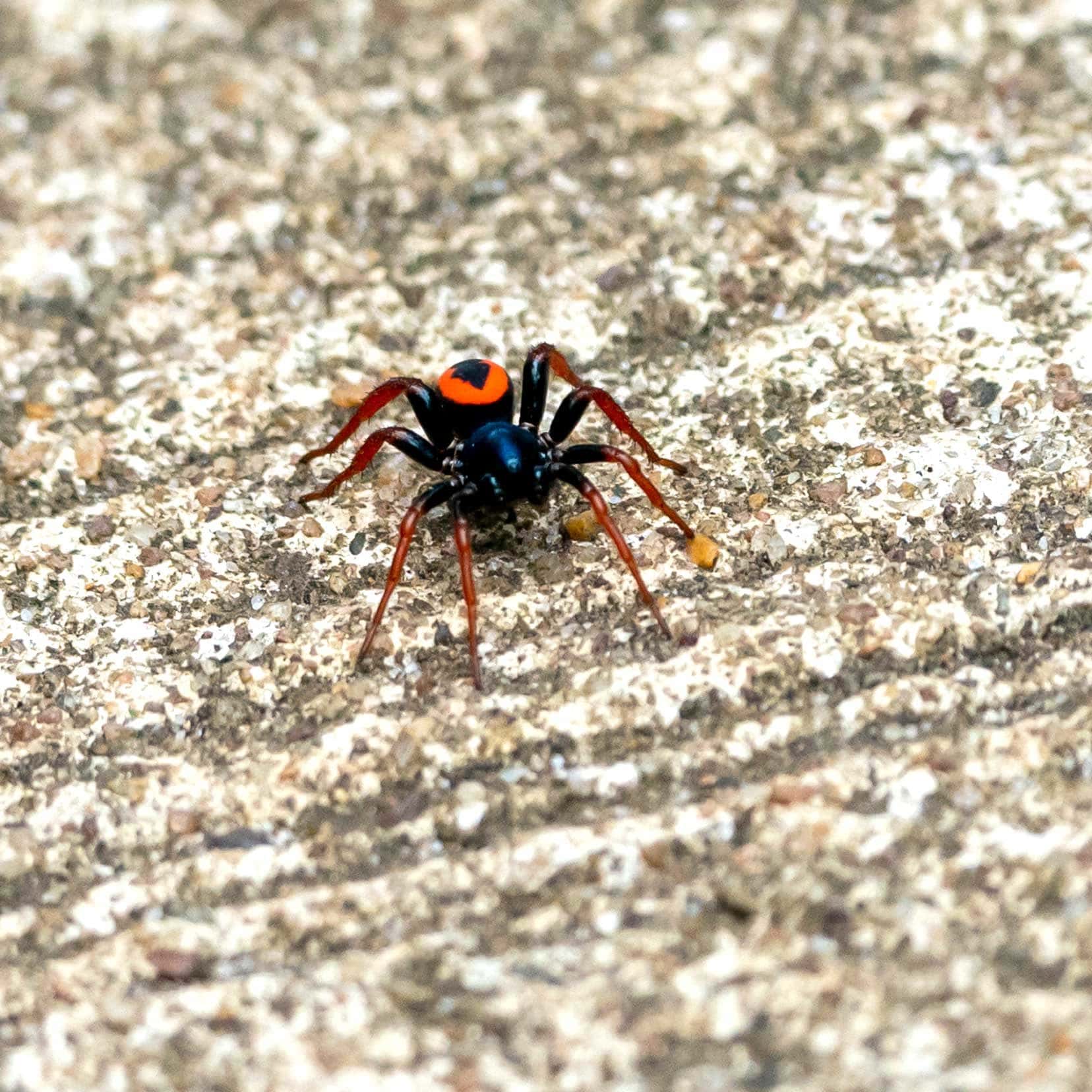
A drive from the gate to the eastern shores’ end takes you to Cape Vidal and past Mission Rocks. Both were worth a stopover, and we saw many families setting up for the day at each.
A few days after we had left St. Lucia, a leopard and her three cubs were spotted on the road to Cape Vidal.
If you would like to experience the Eastern Shores at night, consider taking a Sunset Safari tour. On this Tour, you can spot nocturnal animals such as hyenas or even a leopard.
Your guide will take you to the perfect spot to capture some iconic African sunset shots.
⭐️ If you would like to experience the Eastern Shores at night, consider taking a Sunset Safari Tour. You’ll have more chances of spotting nocturnal animals such as hyenas or even a leopard and an opportunity to capture iconic African sunset shots.
👉 Find out more or book this Sunset Safari in iSimangaliso Wetlands here | ⏰ 3 Hours
An added bonus of this tour is that you get picked up from and dropped off back at your accommodation in St Lucia.
3. Visit Cape Vidal
Cape Vidal seemed to be the destination many of the iSimangaliso Eastern Shores visitors were heading to.
The beach was full of families making the most of this long sandy beach. It was also one of the few beaches we’ve seen with surf lifesavers on duty and flags designating the safer swimming area.
While at Cape Vidal, you may like to take a snorkelling tour, where you are likely to see about 50 different varieties of fish as you are guided around the best spots.
🤿 St. Lucia: Cape Vidal Snorkeling Adventure
🐠 Snorkel gear and a hot drink included
Book or to find out more here | Duration: ⏰ 2 Hours | ⭐️ 4/5 Star Reviews |
4. Explore the Rockpools or Go Fishing at Mission Rocks
We were surprised by the number of cars in the Mission Rocks car park, but it is apparently a popular fishing spot and great for rock pool safaris at low tide.
It’s not a safe swimming or snorkelling area. You’ll need to go further north to Cape Vidal for that.
It was high tide when we were there, but if you scramble over the rocks after walking down the path to the beach, 500 metres north, there is a sandy stretch of beach with a sea cave full of roosting bats — aptly named Bats Caves.
The name Mission Rocks comes from a Catholic Mission station that was established in the area in 1888.

5. Take a Guided Walking Tour in St. Lucia Eastern Shores
A drive through the Eastern Shores is all good, but take a guided walking tour to appreciate the smaller inhabitants. There really is nothing quite like experiencing the African bush on foot; having an expert along makes the experience much more rewarding.
If you are staying in St. Lucia, don’t miss out on this tour to get up close and personal with iSimangaliso’s wildlife and for a unique chance to learn about the Zulu culture and way of life.
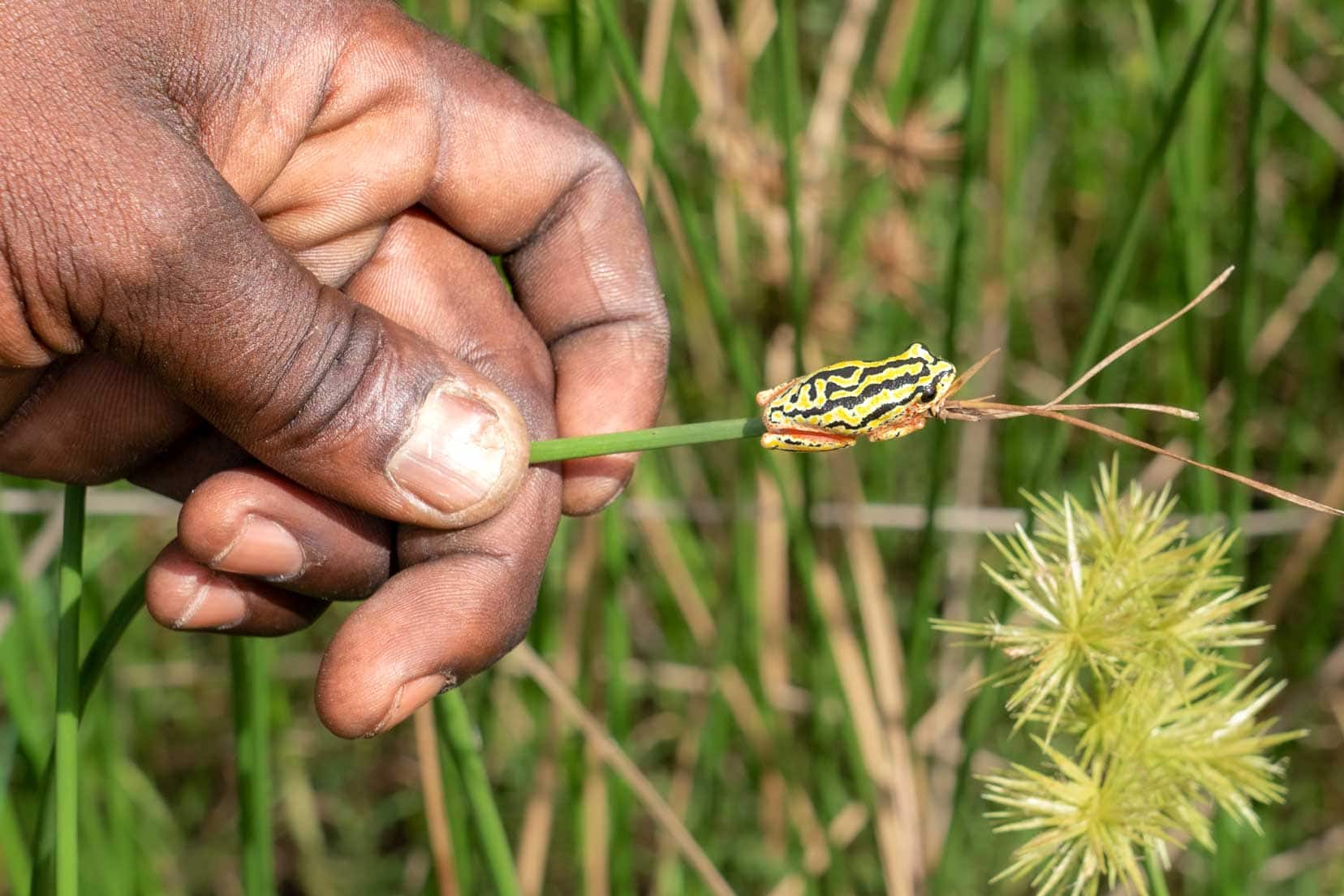
Our walking travel safari tour began at 6 am.
Our guide, Sakhile Duba, of Safari and Surf Wilderness Adventures, met us at the carpark of the Crocodile Centre in St. Lucia, part of the iSimangaliso Wetlands Reserve.
From our campsite, Sugarloaf Camping, we’d passed three roadblocks. At the last one, we were told to pull our 4×4 bush camper off the road and were questioned about the carriage of alcohol. Our vehicle was then searched.
With the obligatory car search in order, we parked and looked around for our guide, Sakhile, who would guide us on a two- and half-hour walking safari.
We would learn not only about the wetlands but also gain insight into the Zulu culture and that of the collective Ngoni people of South Africa.
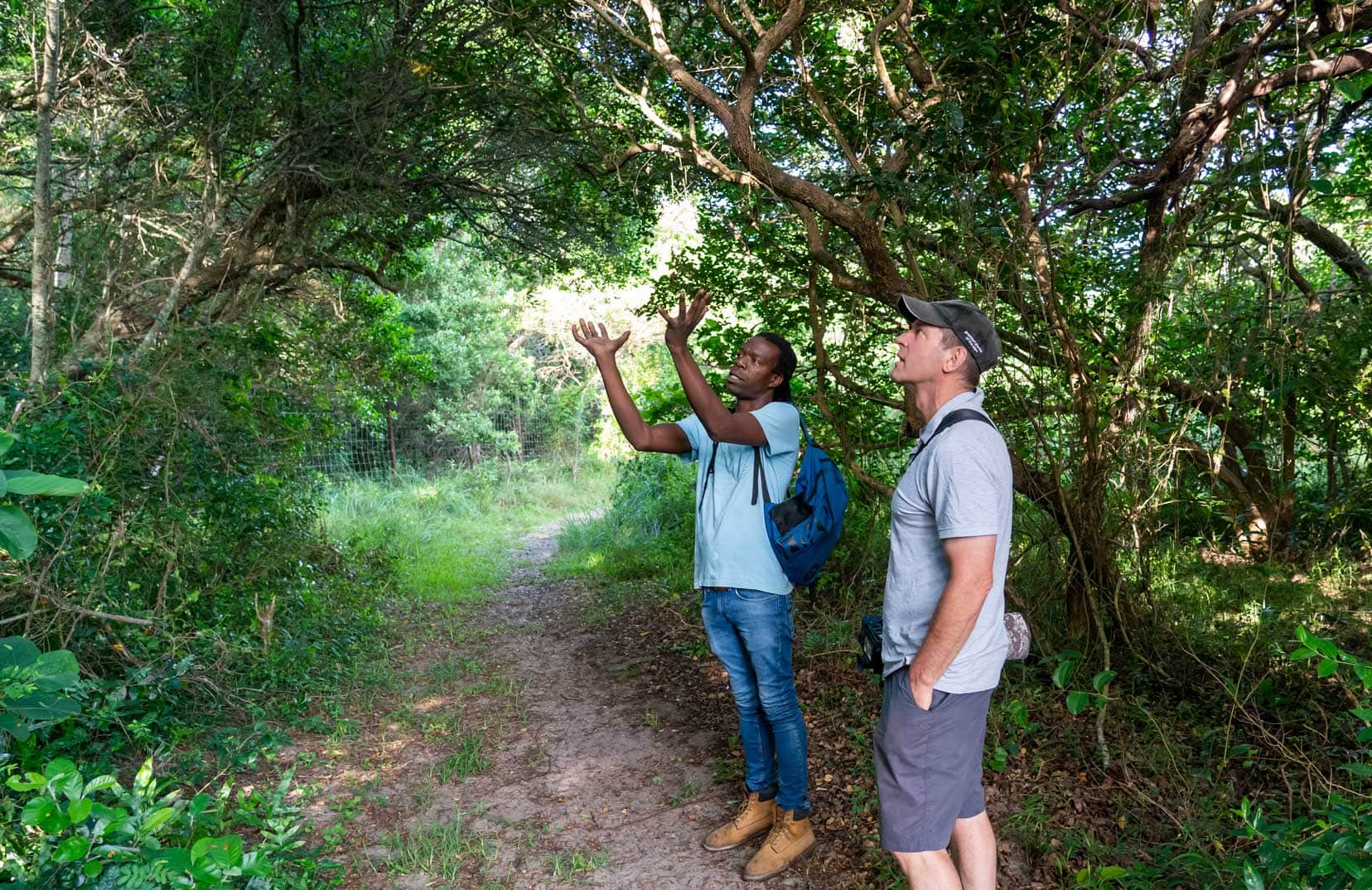
⭐️ The tour we took with Safari and Surf Wilderness Adventures was excellent. Not only did we see and learn so much about the macro world of the iSimangaliso and its birdlife, but our guide, Sakhile Duba, taught us much about his Zulu culture and language.
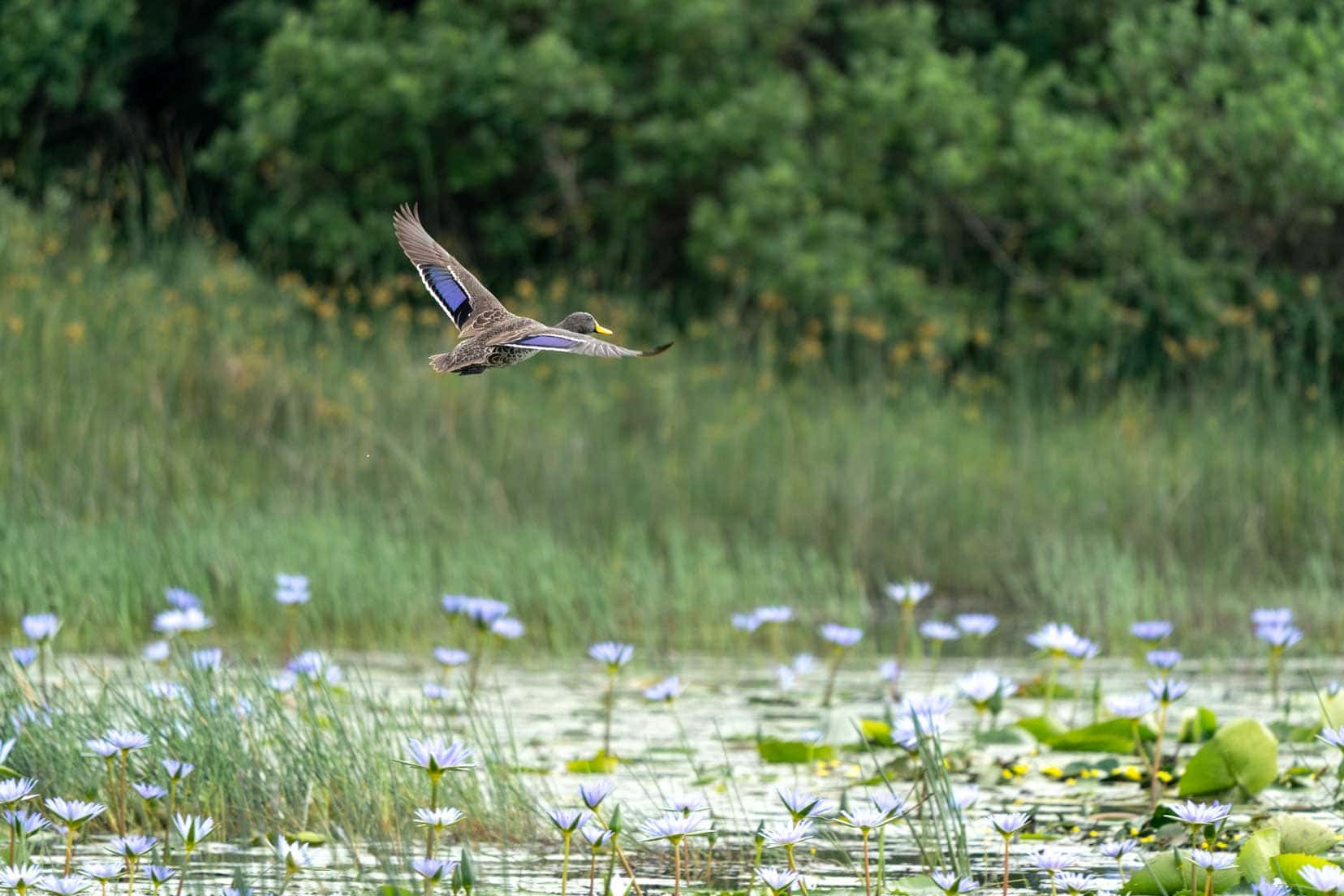
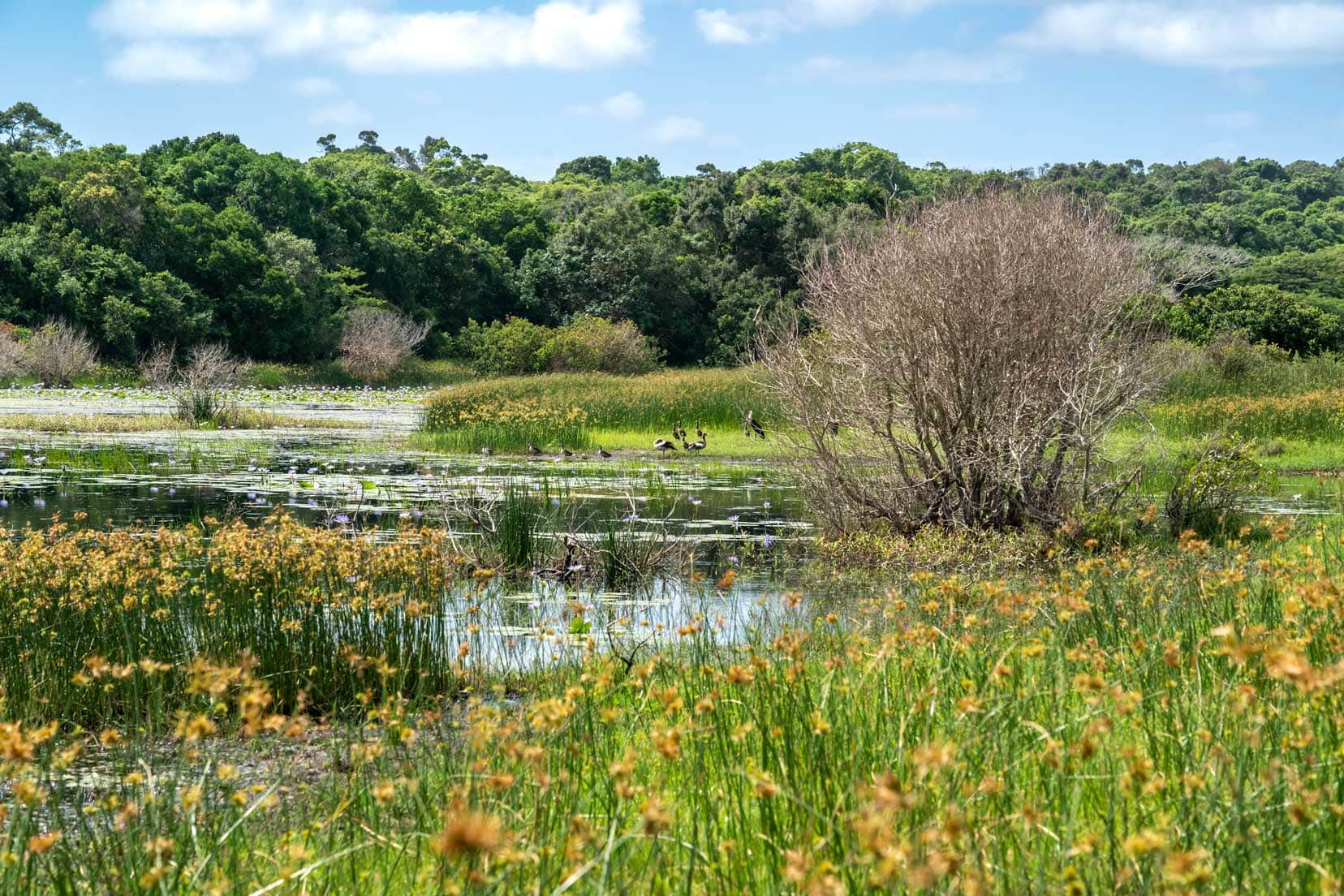
Quick Video Snippet of This Awesome Guided walking Tour
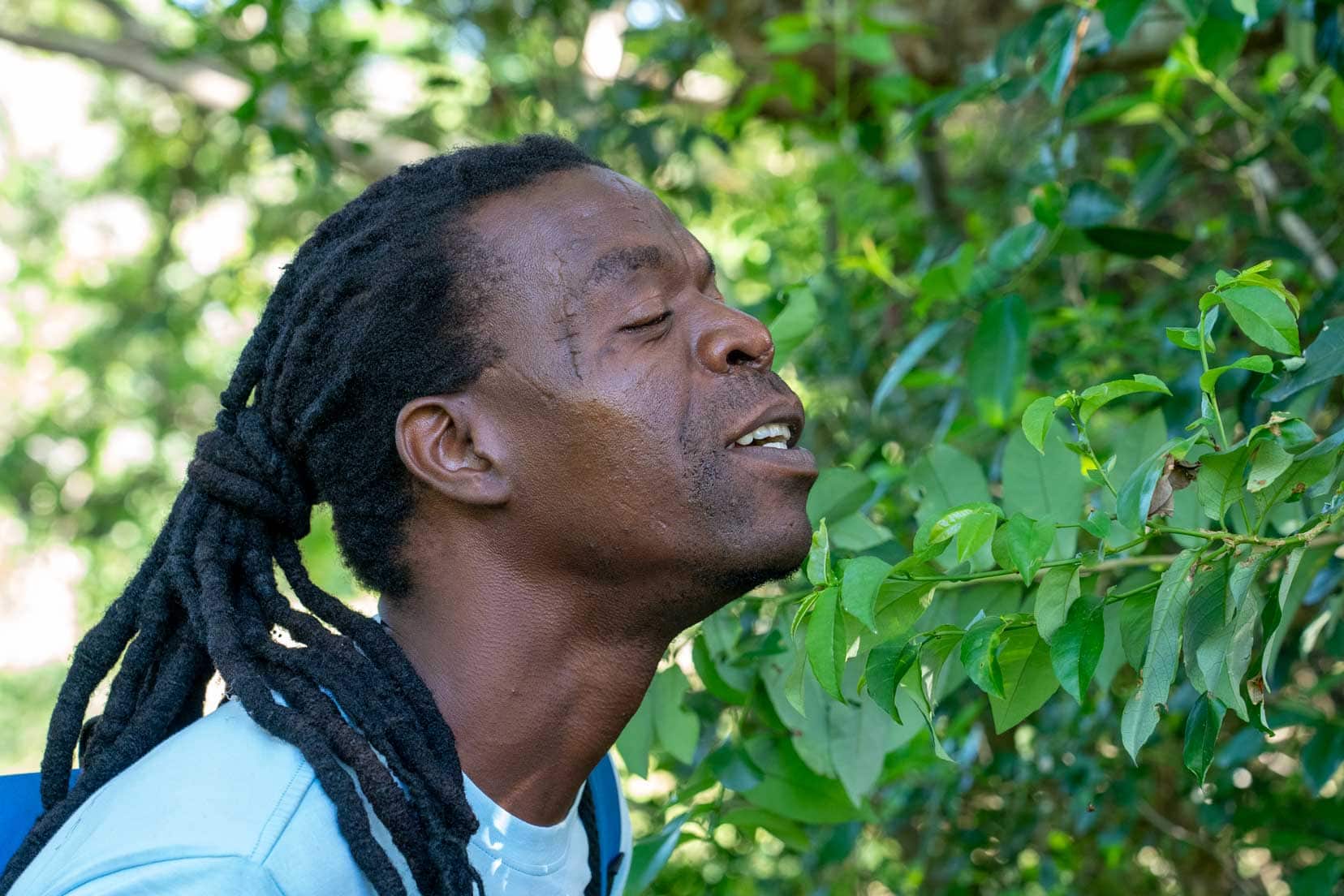
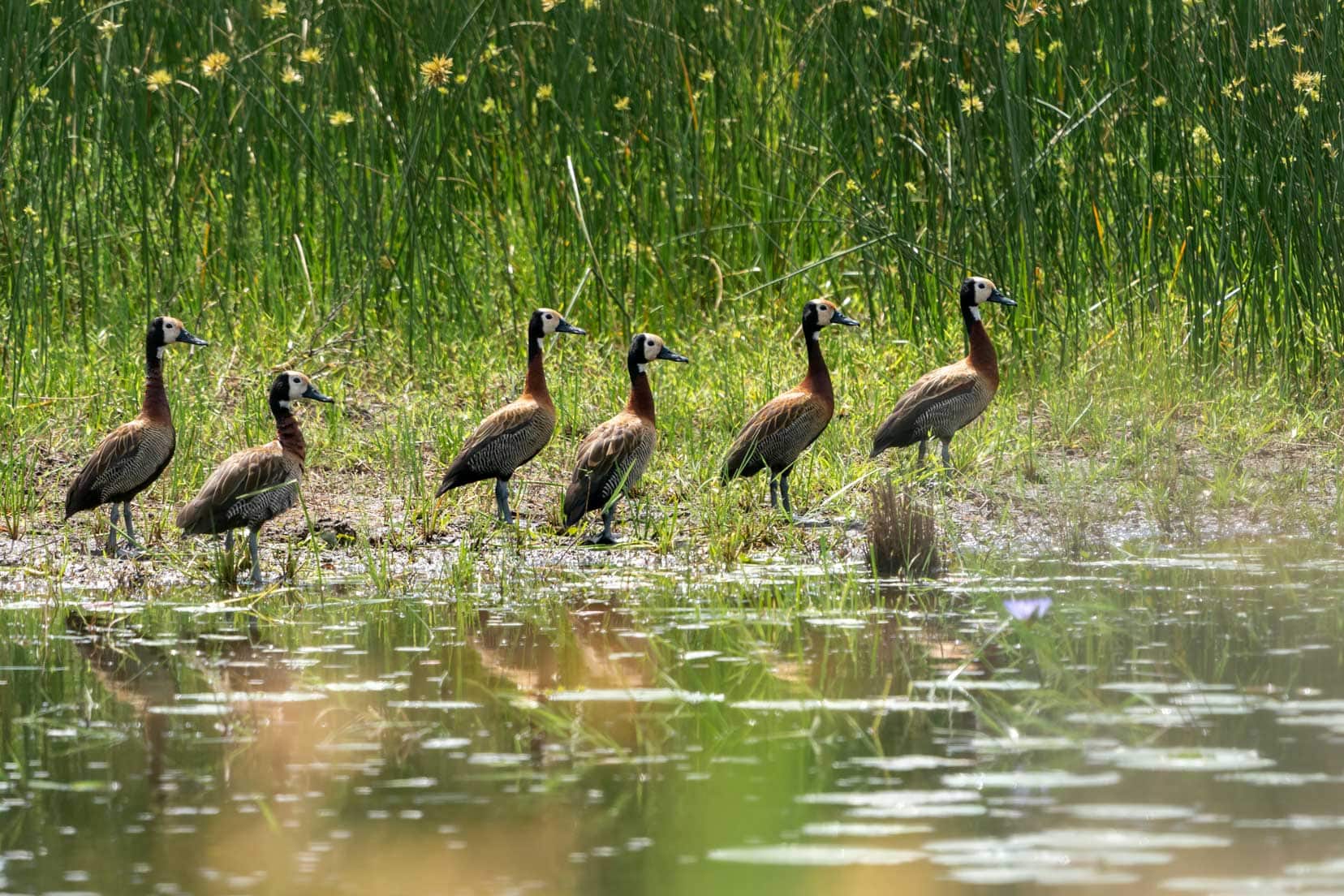
What to Expect on this St. Lucia Guided Walking Safari
The first part of the walking tour began with some history of iSimangaliso Wetland Park and an orientation as to where we were in the park.
Sakhile would stop and point out any birds trying to join in on the conversation. His years of living in the bush came into play with his incredible recognition of and mimicking of bird calls.
As bird lovers trying to understand the names of the birds, this was particularly helpful to us as there are 526 identified bird species in the wetlands.
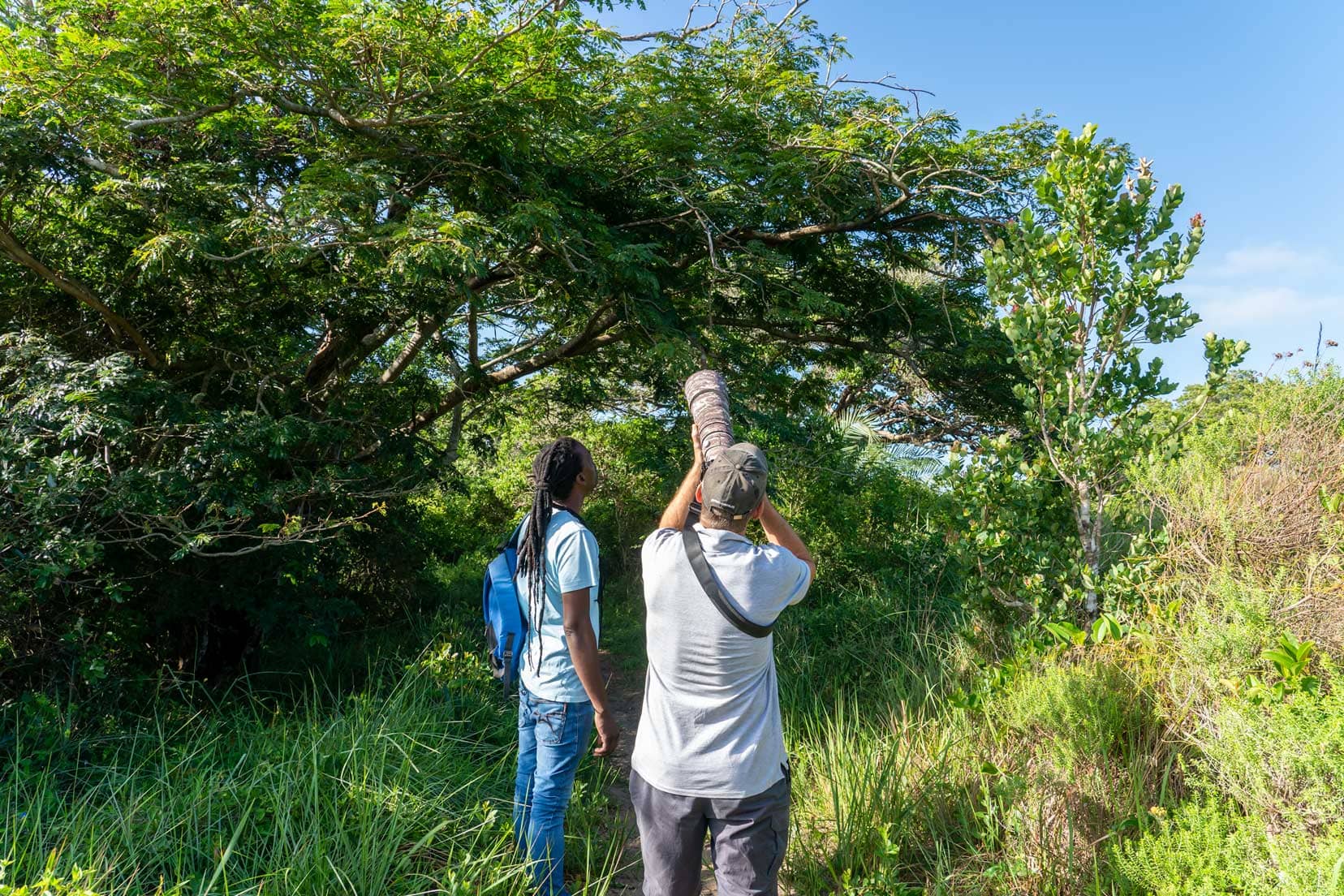
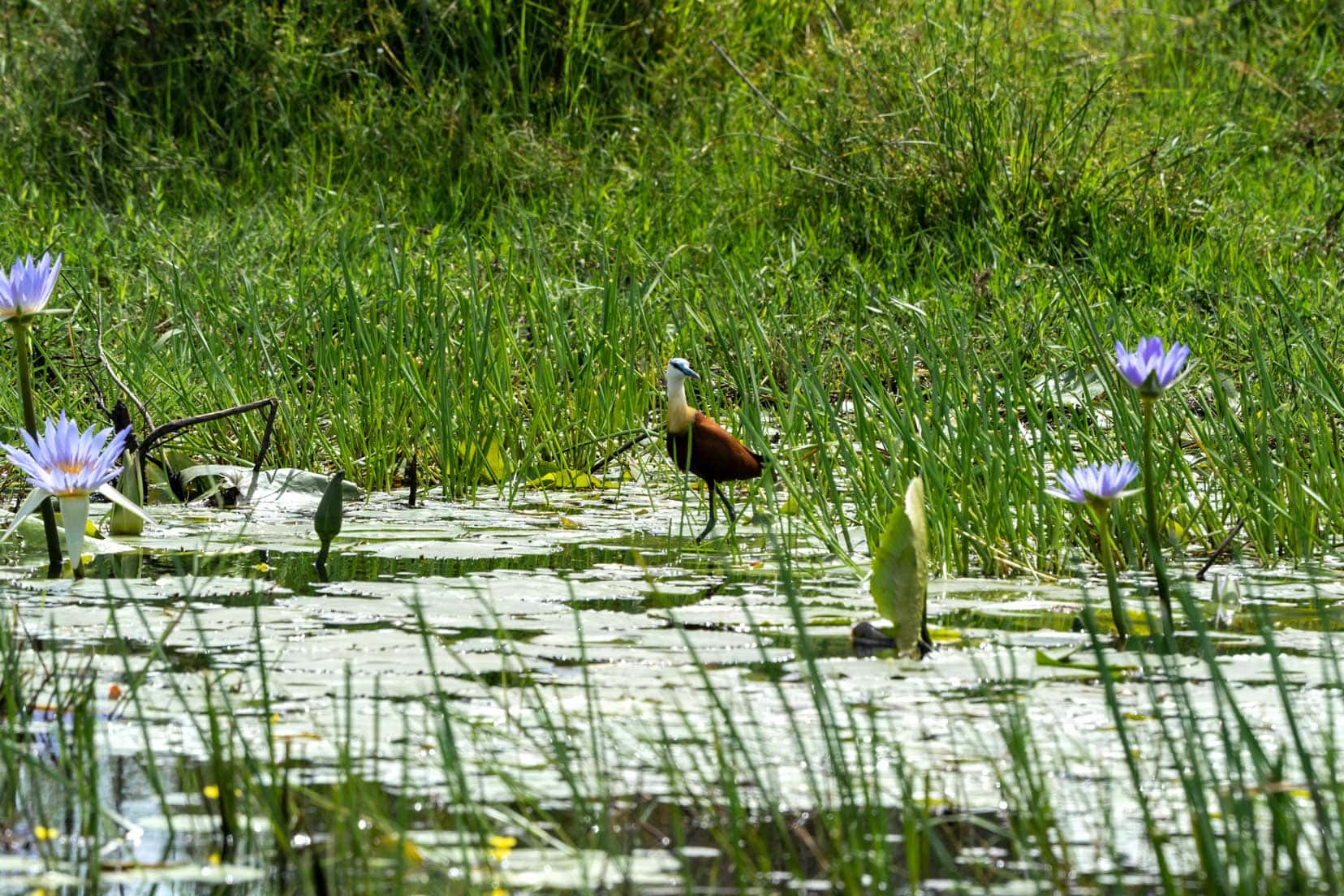
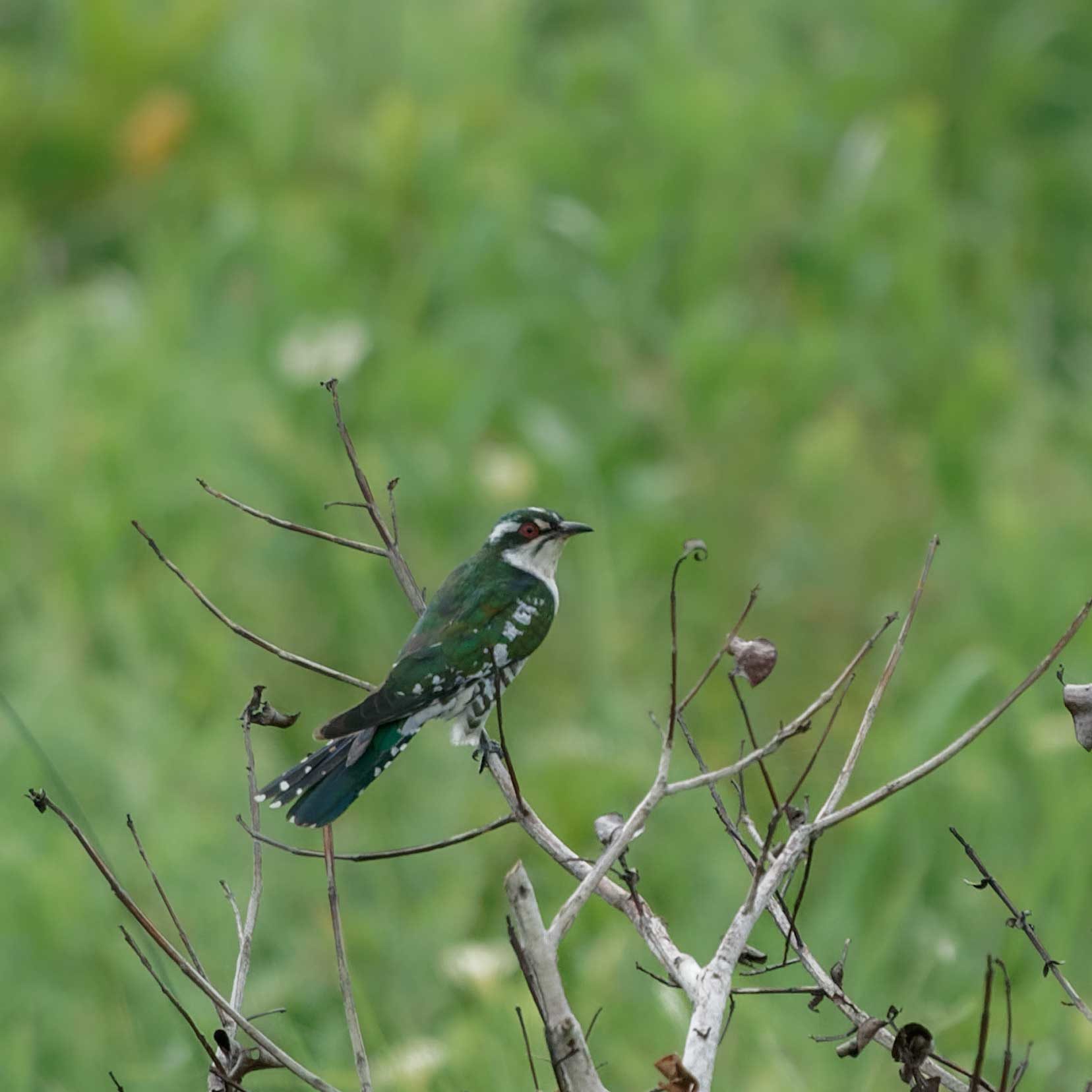
On several occasions, Sakhile would be mid-sentence when he would suddenly point out a tiny frog during a group of reeds or scoop his hand in the air and catch a locust to show us. Like a magician in the African bush.
The bigger game was more accessible to spot. As is often the case, we saw impala and zebra hanging out together, helping each other spot predators who might be looking for a tasty takeaway.
But to be honest, the little things were so intriguing—the tiniest of animals that can only be spotted on foot.
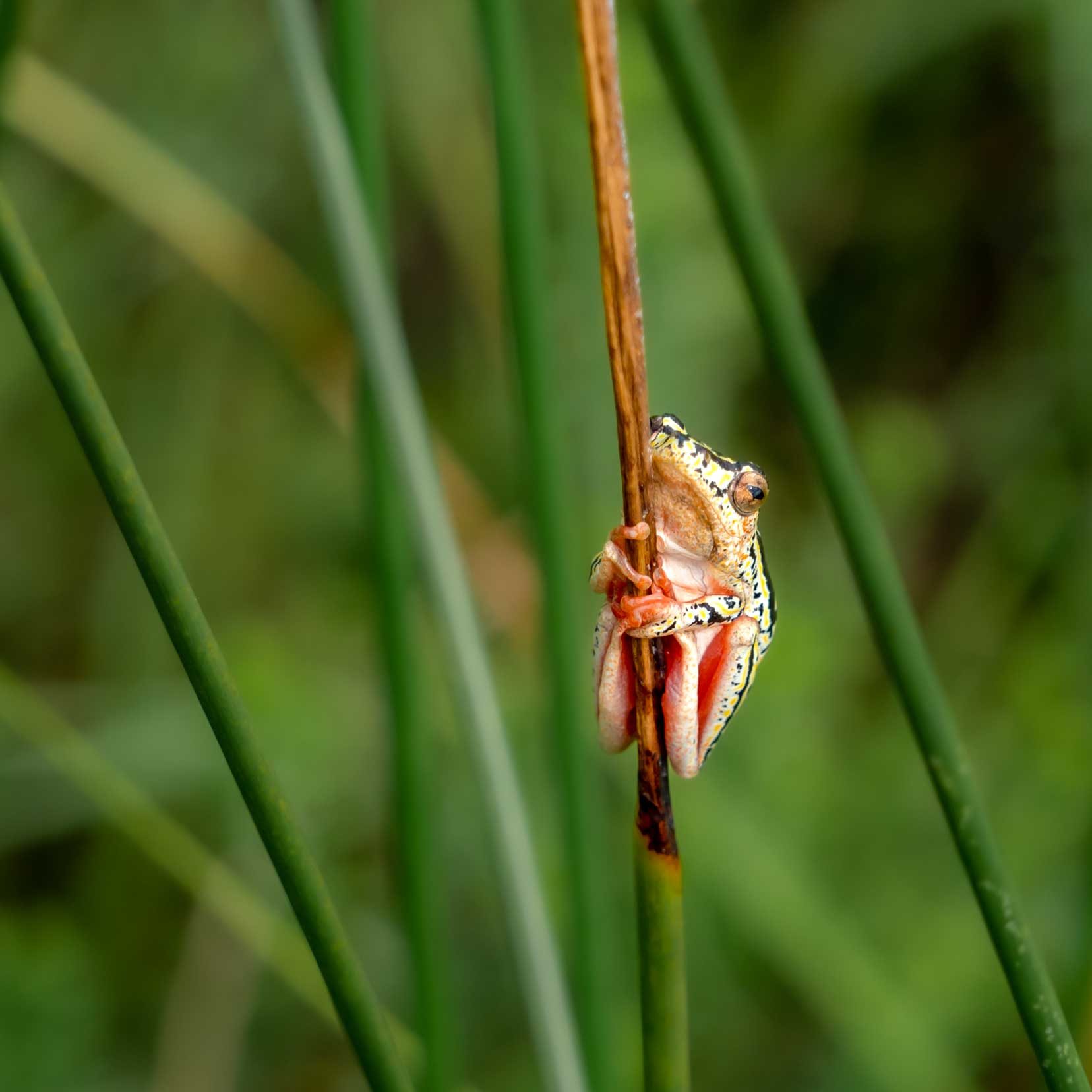
We were never alone, having been joined by hundreds of grasshoppers. Brightly colourful insects with distinctive markings.
But, as Sakhile explained, although pretty, they were pests that ate crops and were a real pain for the people. He called them stinky grasshoppers – they let off a stinky smell when threatened. He had no good words to say about the many bright bugs jumping around our feet.
Nonetheless, I couldn’t resist taking photos — even though I felt I should be shunning these pesky plunderers.
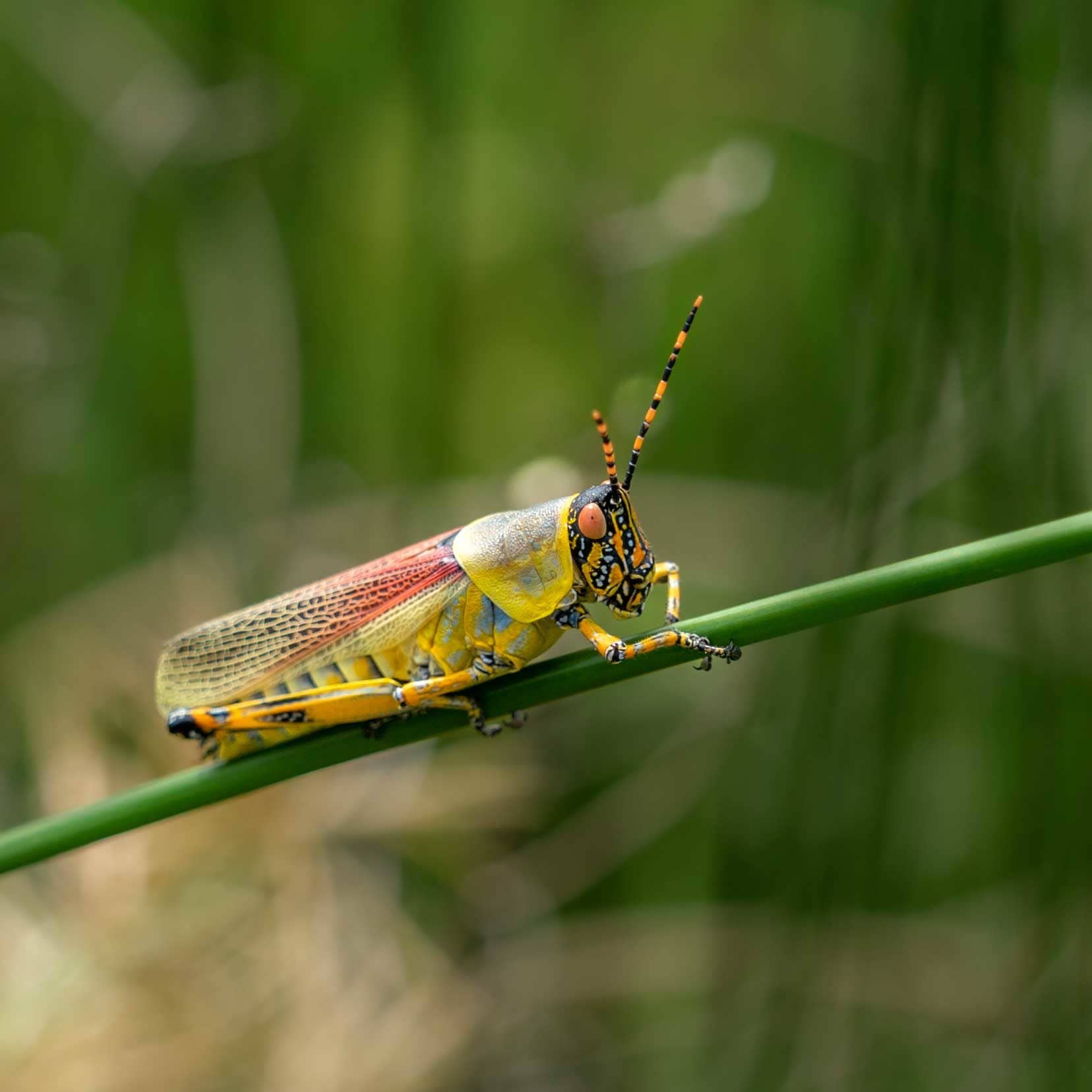
To show us the local, much more beneficial, locust, Sakhile simply plucked one from the air – as I said, the magician of the bush.
He explained that these did not attack crops and made a great snack when roasted on a spit.
A common food in these parts for the Nguni people.
“This locust… is great threaded onto a stick and roasted.”

On a guided safari walk, there are 114 butterfly varieties to capture your attention, frogs so small you’d almost certainly miss them if you didn’t have a guide to point them out, and bugs of all shapes and sizes scurrying this way and that.
The macro world often remains unobserved by the 4×4 cars and tour guide trucks trundling by.
I don’t know about you, but I delight in learning about the way nature works and, in particular, the symbiosis of how animals co-relate. There are so many examples of this in the African Bush.
One that I was particularly intrigued by and learnt about on our guided safari walk in St. Lucia was that of the dung beetle.
I already knew that the dung beetle carries away dung and buries it underground, but I didn’t know that it has its own personal team of groomers.
On the undersides, in the soft parts of the beetle, are tiny flies that feed on the beetle’s detritus, keeping the beetle’s airways clear. These microcosms of nature are just incredible.
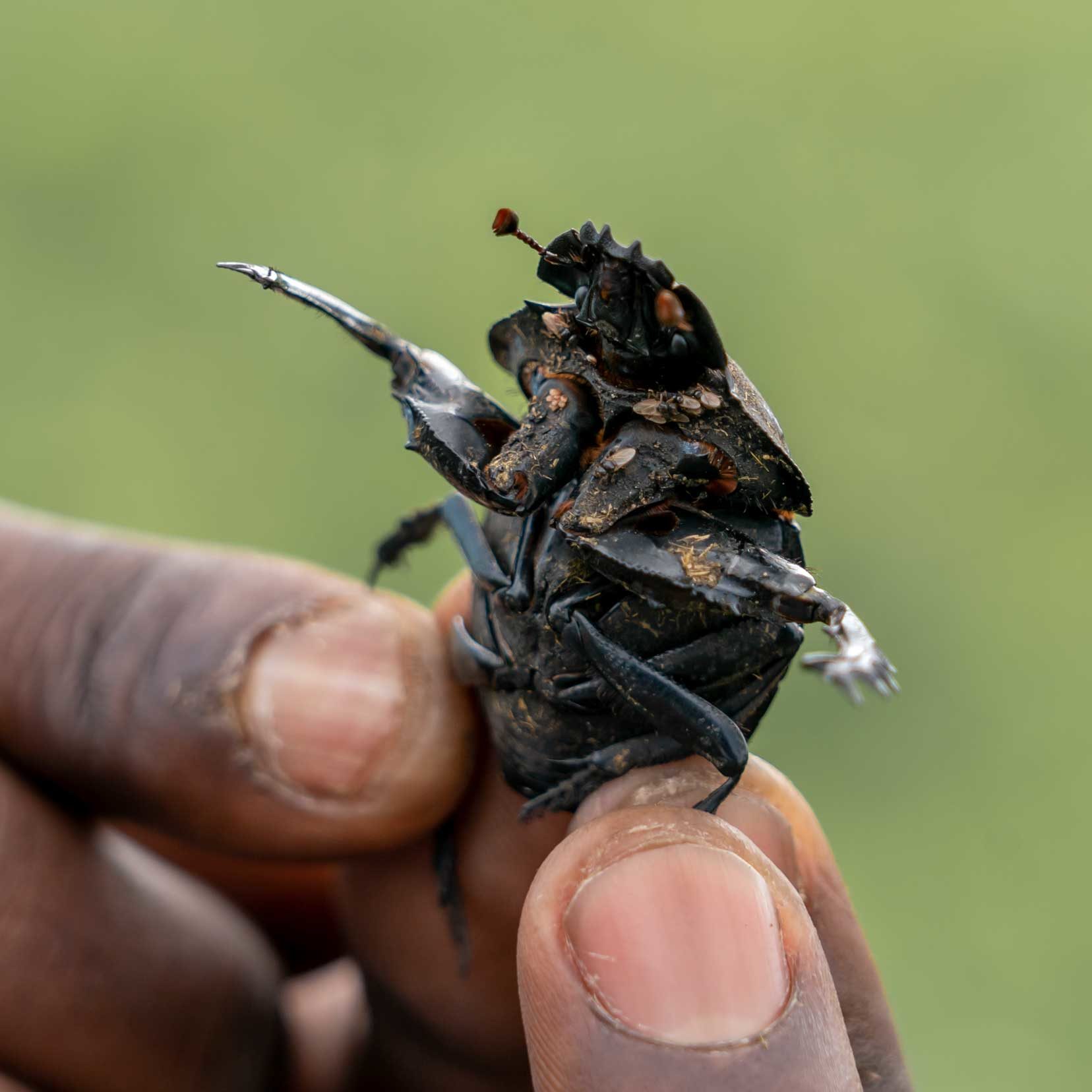
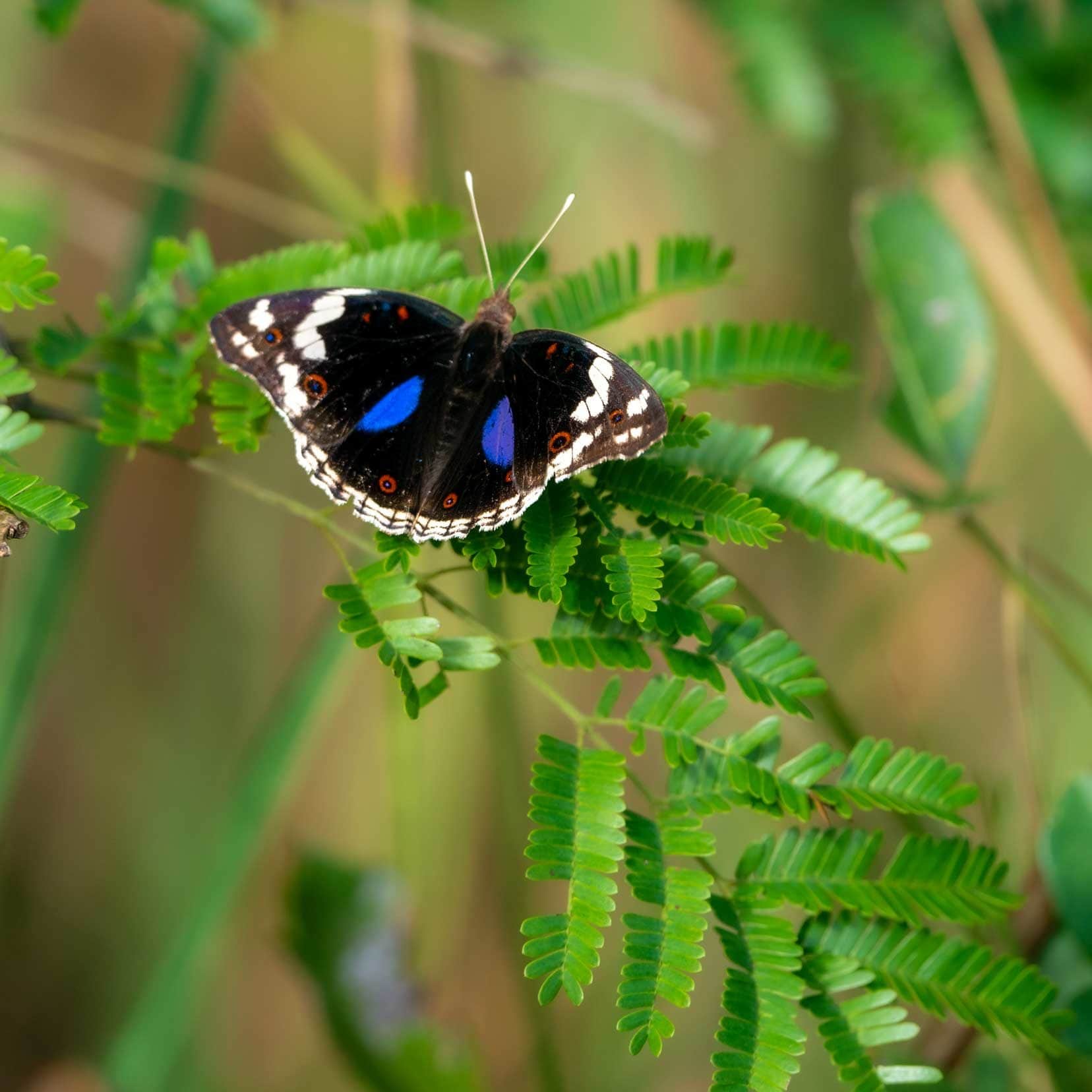
From the animal world to the plants around us, we were treated to knowledge about the whole ecosystem’s functionality.
We passed reeds used to make mats and the monkey apple (or monkey orange ) tree, which can not only be eaten when ripe, but locals carve pictures and shapes into it. The shapes remain when the shell hardens, making it a great item to sell to tourists.
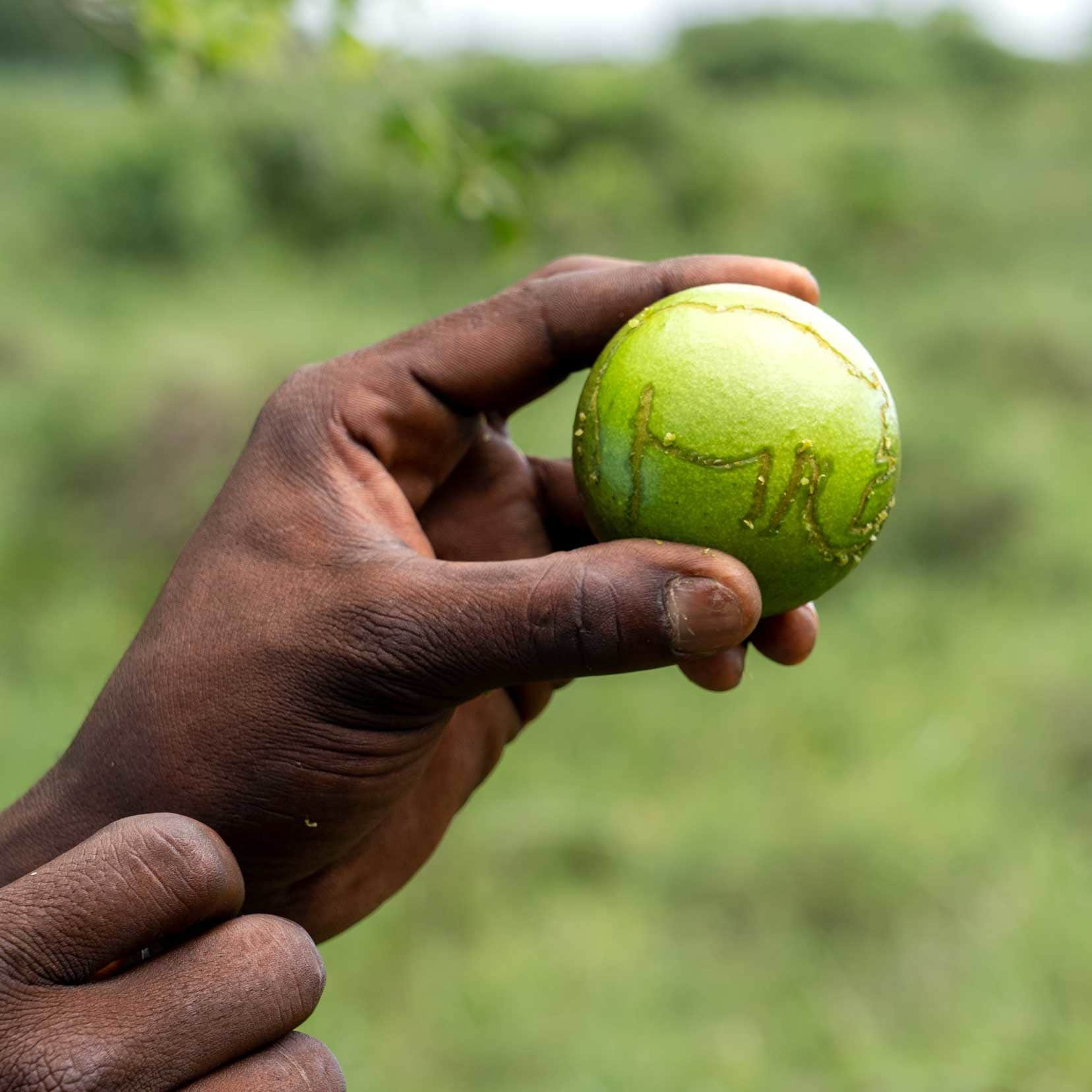
Don’t eat any of the unripe monkey fruit, though. The unripe fruit contains strychnine and although locals use it as a tincture to cause vomiting if they have an upset stomach, I don’t suggest you try it.
⭐️ Reserve your spot today (Pay later) or to find out more details on this Guided Walking Tour iSimangaliso Wetlands, CLICK HERE. | ⭐️ 5 Star ratings | ⏰ 2.5 hours
Zulu Culture
Sakhile is Zulu and is proud to share information about his and the Ngoni people’s culture — the four main groups of people in KwaZulu-Natal.
Watch this video with Sakhile explaining the four groups that make up the Nguni people and their language:
On the walk, we learnt so many interesting facts about the culture and also Sakhile’s personal stories of growing up in rural South Africa, minding cattle and of both his adventures and misadventures in the African bush.
Some of the Zulu cultures are a world apart from what we are used to — paying a dowry in cows and sending good negotiators in your family to introduce yourself to a prospective wife’s family, springs to mind.
But what was markedly evident in the stories Sakhile told us, was the high regard for respectful behaviour in the Zulu culture.
Moreover, it was interesting to see that what is expected in one culture can be so improper in another.
For example, in the Zulu culture, it is disrespectful to look an elder in the eyes. The complete opposite of expectations in Europe for example, where it is considered rude not to look someone in the eyes when talking to them.
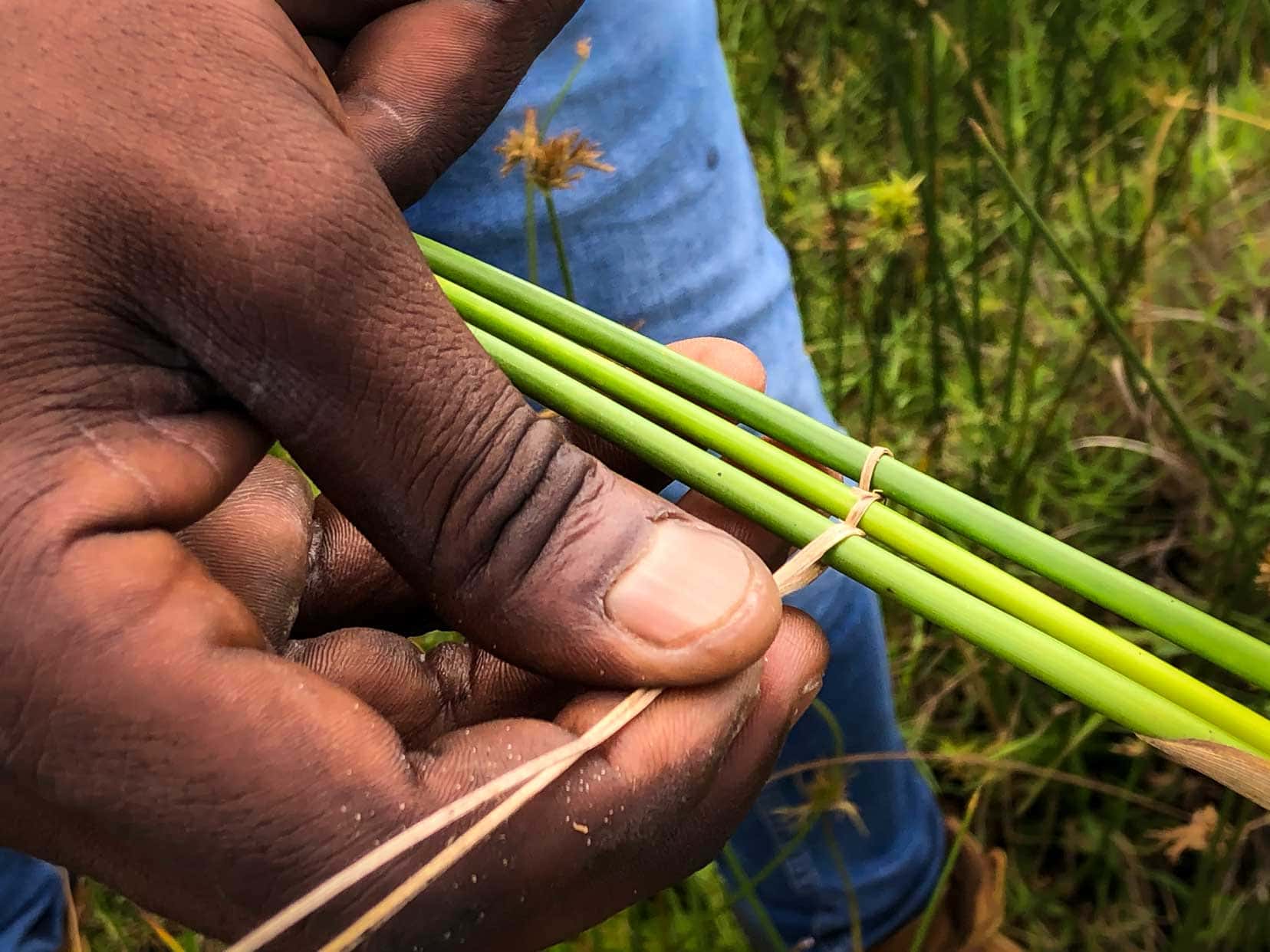
Zulu Words to Learn
Before we left Sakhile he gave us a list of words to use to help immerse ourselves just a little more into the local culture.
Zulu words to use while in South Africa are:
Note: how to pronounce the word is in bold and the actual spelling in italics.
- Hello = sow -a bawna (sawubona)
- Thank you = gee-a -bonga (ngiyabonga)
- We thank you = see-a-bonga (sibonga)
- Thank you very much = gee-a-bonga ka-koo-loo (Ngiyabonga kakhulu)
- How are you? = un-ja -nee? (unjani)
- I’m fine = n- gee-a-peela (ngiyaphila)
- How much? = ma-leen-ee (malini)
- Go well = hum-ba-gash-ay (hamba kahle)
- Stay well = sala-gash-ay (hlala kahle)
- Go = hum-ba (hamba)
- Stop = ee-ma (ima)
- Look = bokka (bheka)
- Come here = wa-sa-la (woza alpha)
For more on Sakhile, including more information about the wetlands and Zulu culture – check out his YouTube Channel here.
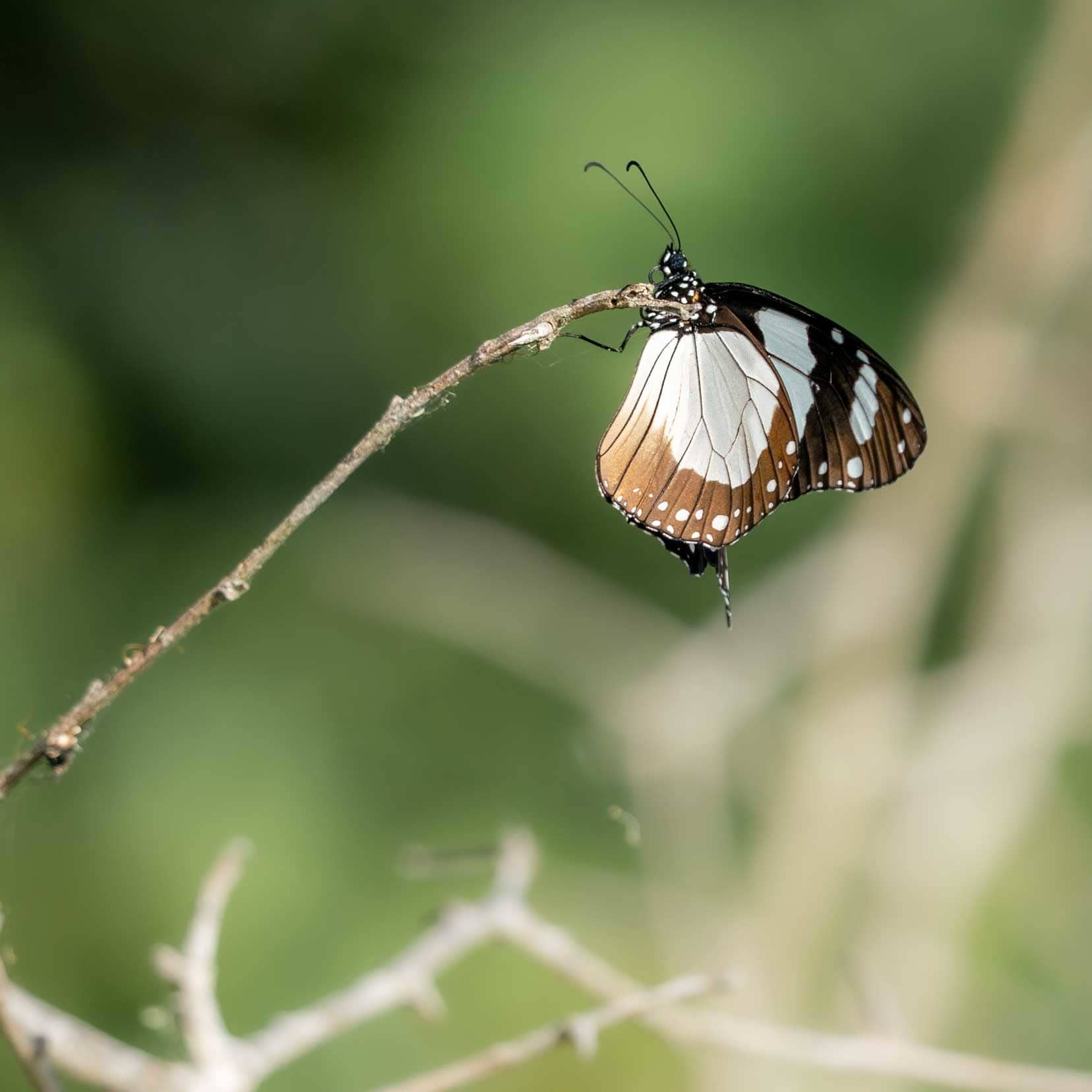
If you are particularly interested in birdwatching, you can book a birdwatching tour, venturing out with your guide to look for Livingstone’s turaco, snake eagles, pink-throated twinspots, scaly-throated honeyguides, and much more.
6. Take a Safari Tour to Hluhluwe-Imfolozi Park
Established in 1895, Hluhluwe-Imfolozi Park, which covers 960 square kilometres, is Africa’s oldest game reserve. A tour of Hluhluwe-Imfolozi Park is a fabulous way to experience this massive park.
It is famous for its Save the Rhino campaign, which has relocated more than 4000 rhinos into the wild.
There are three gates for the park entrance.
- Cengeni Gate (on the south side and accessed via Nongoma)
- Nyalazi Gate (on the south side via Mtubatuba town)
- Memorial Gate (on the north side via Hluhluwe)
Game Park Opening Times:
- Winter: Open 6:00 am, Close 5.00 pm
- Summer: Open 5.00 am Close 6:00 pm
- I.D. or Drivers Licence Required at Gate
🦏 To book a tour or find out more about it – click here |⭐️ 4.7/5 star review | ⏰ 6.5 to 8.5 hours |
7. Take a Turtle Spotting Tour
Note that you will only be able to do these tours if you are visiting iSimangaliso from mid-November to February.
Leatherback and Loggerhead turtles start coming ashore in mid-November each year to lay their eggs. Female Turtles will mate every 2 to 3 years and lay their eggs up to 9 times during one season. The eggs then hatch between 55 and 75 days later.
Leatherback turtles are the largest in the world, growing up to 2.7 metres long, and they are the only turtles without a hard outer shell.
Female Turtles will mate every 2 to 3 years and lay their eggs up to 9 times during one season. The eggs then hatch between 55 and 75 days later.
⭐️ We recommend contacting Safari & Surf to arrange a Turtle Tour
8. Visit the Crocodile Centre, St. Lucia
The combination of flooding and the ever-changing nature of the estuarine environment in the wetlands has meant that over recent years, the crocodile population in iSimangaliso has declined.
The lakes have become saltier, forcing the freshwater crocodiles to find alternative places to hang out. Therefore, the best chance to see and learn more about crocodiles is at the Crocodile Centre in St. Lucia.
We didn’t visit, as coming from Australia, we already have seen and know quite a bit about crocodiles. We heard mixed reviews about the centre. Some said it was quite run down, while others enjoyed seeing the crocodiles and learning about them.
Therefore, if you want to see crocodiles up close, this might be worth a visit; otherwise, there are plenty of other activities to keep you busy in the iSimangaliso Wetlands.
9. Visit uMkhuze Game Reserve
Another of South Africa’s oldest game parks in iSimangaliso is uMkhuze Game Reserve. Here, 420 bird species are found, as well as lions, buffalo, black and white rhinos, leopards, elephants, wild dogs, hyenas, and cheetahs.
Day visitors can enjoy picnic and BBQ sites, as well as the Rhino Done-O takeaway at Mantuma, which is open for breakfast, lunch, and dinner.
You can enter as a day visitor or stay over in a chalet or safari tent in the park’s Mantuma Camp.
10. Stop off at Lake Sibaya
On route to Kosi Bay from St. Lucia, we stopped for a picnic at Lake Sibaya, which is nestled behind the forested coastal dunes.
We bumped and bounced over the sand track and parked right beside the lake with only a couple of snake eagles for company.
Lake Sibaya is a RAMSAR wetland of international importance and is home to KwaZulu-Natal’s second-largest population of hippos and crocodiles. However, we didn’t see evidence of either while there.
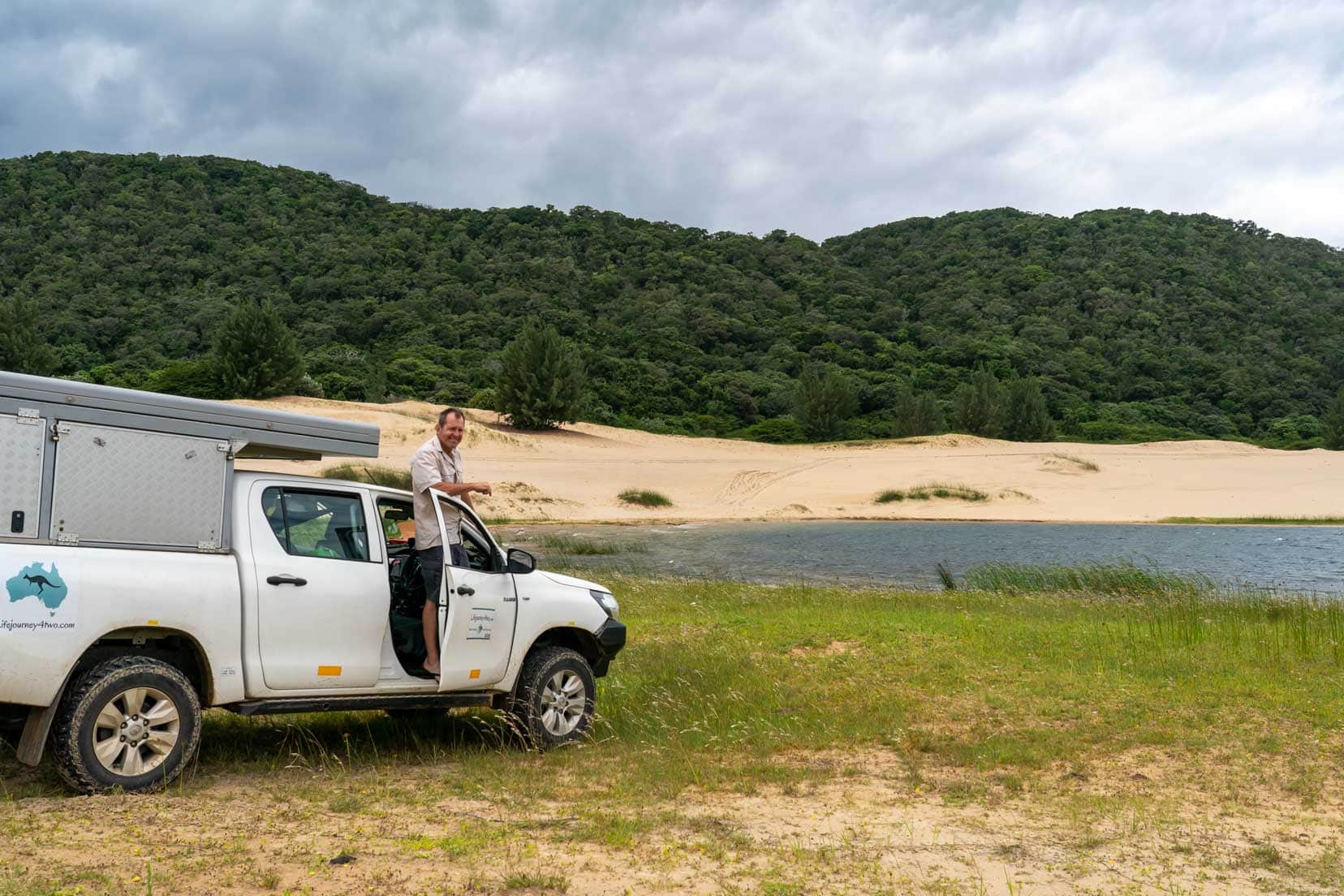
11. Camp at Mabibi Beach or Stroll its Beautiful Shore
If you are driving between St. Lucia and Kosi Bay, stop off or even camp at Mabibi Beach.
Mabibi Beach is a remote, long, sandy beach that requires a 4×4 to access. A small entrance permit at the campsite allows you to park.
If you want to camp, there are 8 private sites, all surrounded by the subtropical forest. Each site has water and a braai/fireplace.
Leatherback and loggerhead turtles nest along here, and turtle viewing tours are available.
Nearby is the luxury Thonga Beach Resort, which has its own viewing deck for guests only on the beach.
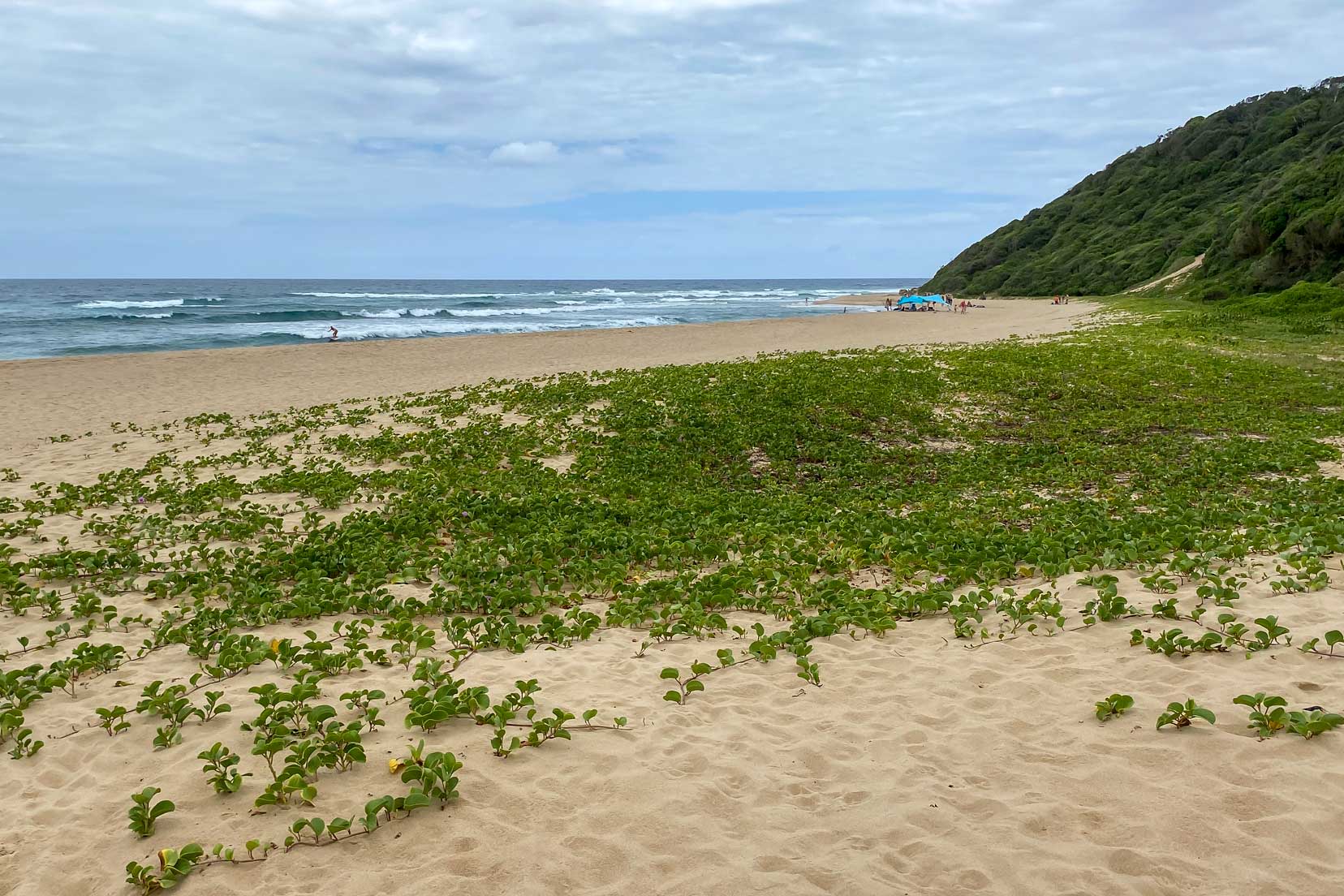
12. Explore Kosi Bay
Kosi Bay headlined the Home of the Holiday in the (Dec 2022/Jan 2023) edition of GO magazine, is in the northern part of iSimangaliso Wetlands, near the border of Mozambique. It is popular with fishermen and snorkelers.
Kosi Bay has 4 main lakes:
- Makhawulani (First Lake)
- Mpungwini (Second Lake)
- Kuhlange (Third Lake)
- Amanzimnyana (Fourth Lake
Kosi Bay is the northern part of iSimangaliso Wetlands, and visitors pay R72 per person per day plus R65 per car. (Note: the Rhino Card does not include admission into iSimangaliso Park.)
Around the lakes are mangrove swamps, forests of sycamore figs, and raffia palms, all of which support a rich biodiversity of animals and birds.
In addition, humpback whales visit seasonally, and leatherback and loggerhead sea turtles come ashore to lay their eggs in October. In February, there is a chance of seeing the hundreds of hatchlings making their treacherous journey to the sea — sadly, only a fraction will make it.
Kosi Bay Mouth is sometimes referred to as the aquarium due to the plethora of fish in its waters. It is one of the best places in South Africa to snorkel.
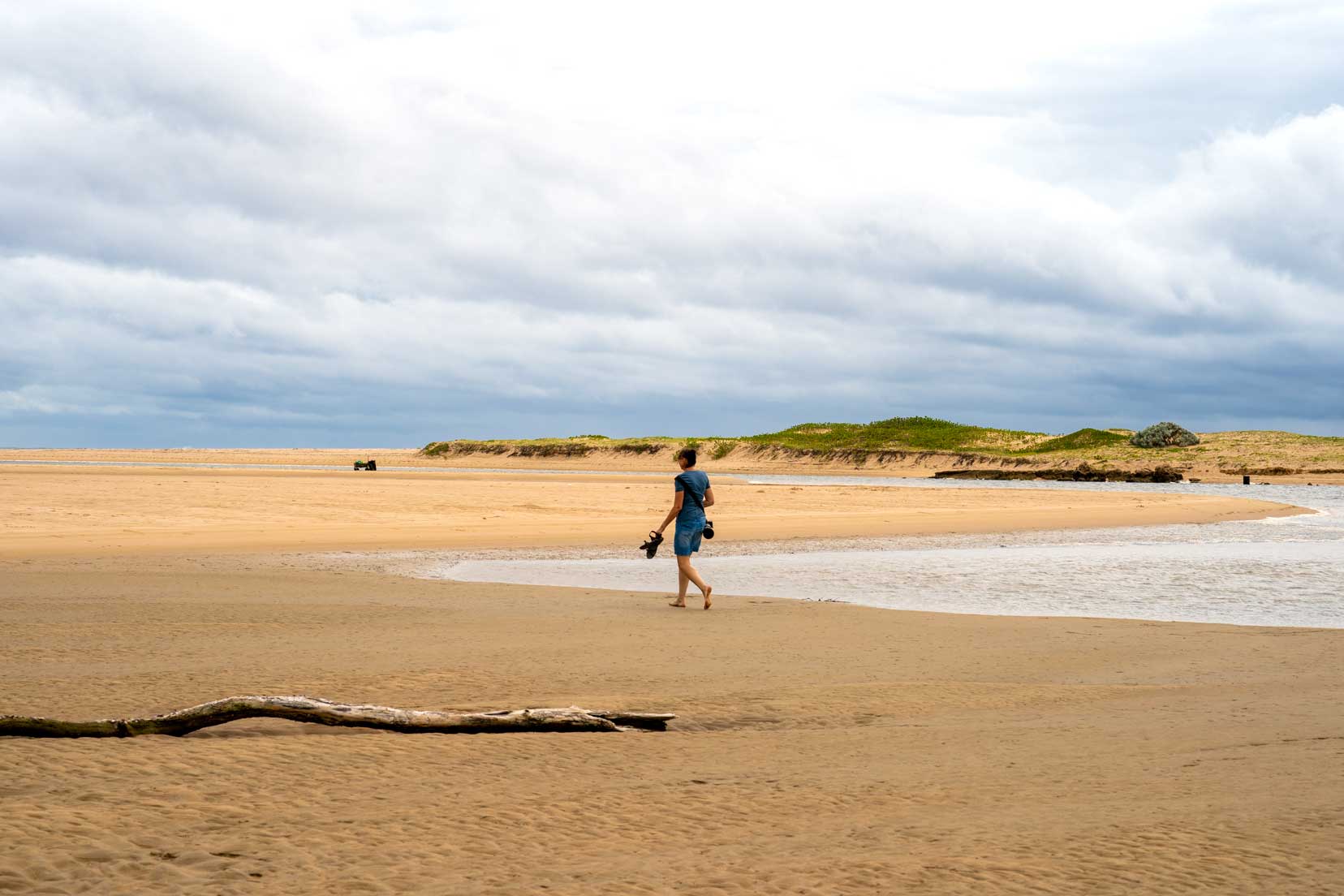
Unless you have visited before, it isn’t the easiest place to figure out how to get to the lakes or Kosi Bay Mouth. You will also need a 4×4 to get to many of the campsites—but not all, so check with the various camps or lodges before you book.
The campsites can provide you with extra information but note that you will need to buy a permit for the Kosi Bay Lakes.
When we visited the mouth of the Estuary at Kosi Bay, we were able to get a permit from the campsite we were staying at. However, you can buy one at KZN Ezemvelo (see map), situated at Kosi Bay Resort, on the edge of Kuhlange or Third Lake.
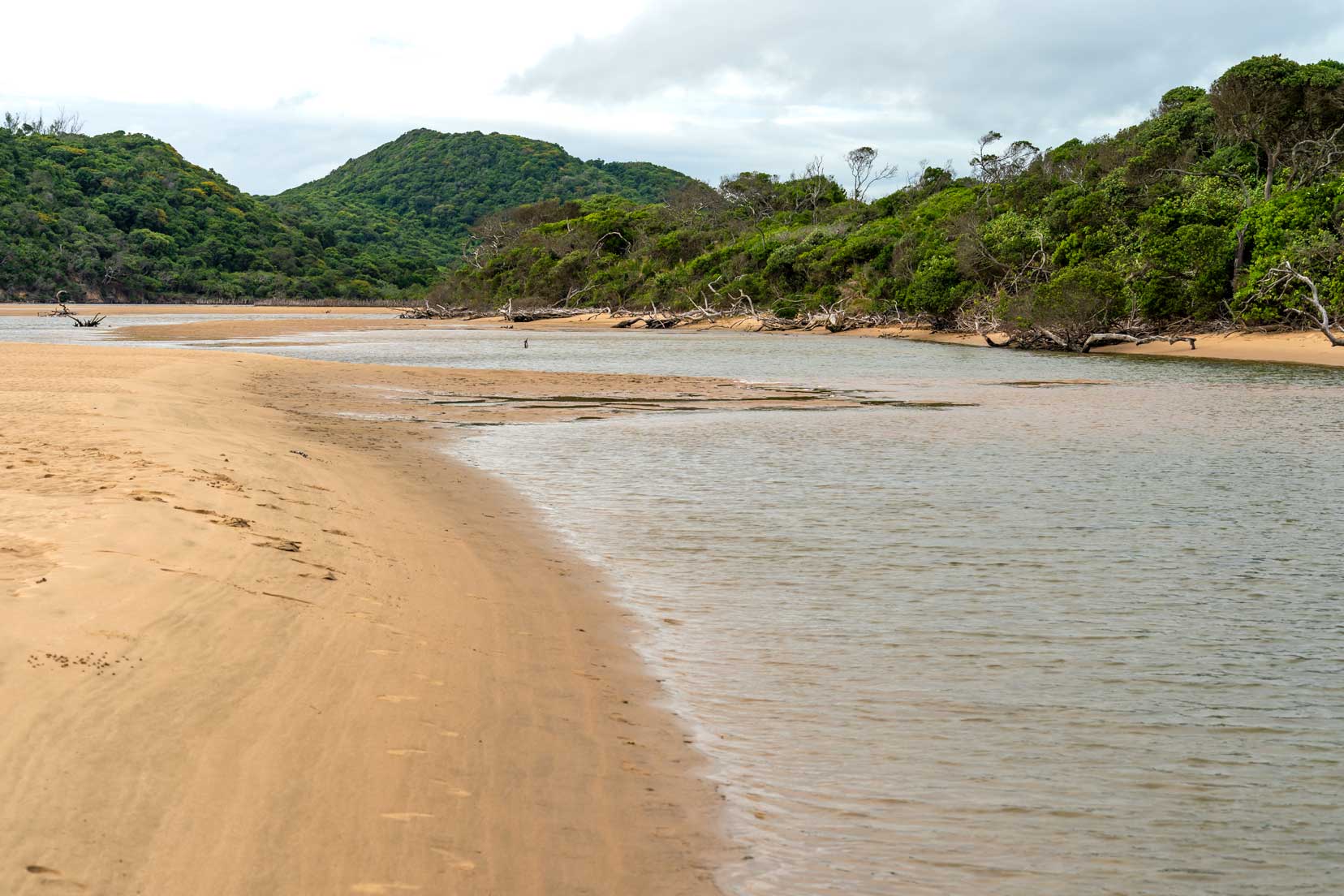
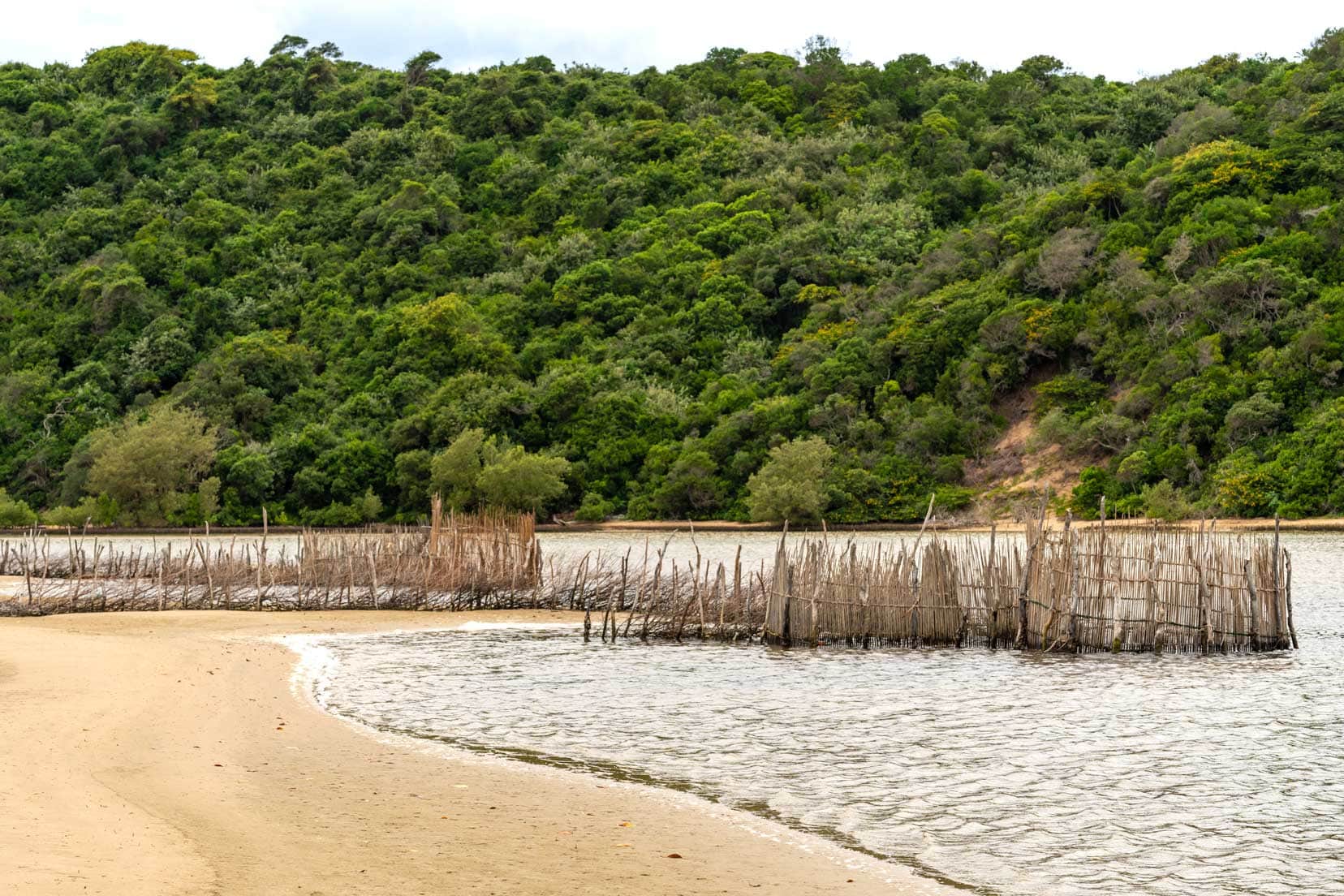
If you’d like to explore the Kosi Bay Mouth Experience – take a tour that combines:
- 🛶 A kayak tour through the mangroves,
- 🤿 A snorkel to discover the myriad of colourful fish and
- 🐠 After learning about the traditional fish kraals from a local Thonga fisherman, finish with a traditional fish braai.
🛶 Find out more or reserve the KOSI BAY MOUTH TOUR here
⭐️ 5/5 | ⏰ 6 hours |🐟 Fish BBQ
13. Go Snorkelling at Kosi Bay River Mouth
Kosi Bay Mouth is sometimes referred to as the aquarium due to the plethora of fish in its waters. It’s one of the best places in South Africa to snorkel. Discover the diverse marine life, including emperor angelfish, blue-barred parrotfish, and honeycomb rays.
What you can see depends on the weather and tide, but the best time to snorkel here is when clean seawater flows into the estuary at high tide.
You can take a small group tour with a local guide who takes you to the best spots to see fish and help you identify them afterwards.
🐟🐠🐟 This Snorkelling Adventure includes kayak and braai
| ⏰ 6 hours | ⭐️ 5/5
14. See the Traditional Fish Kraals of Kosi Bay
If you head to the River Mouth of Kosi Bay, you will see all the fish kraals in the estuary.
The Best of Kosi Bay Tour is the perfect tour to take to learn more about the Kraals and the 700-year-old tradition of the Thonga people.
Along with a kayak and snorkel tour, you will learn about the workings of the kraals from a local fisherman, sample some traditional palm wine and enjoy a luscious traditional fish BBQ.
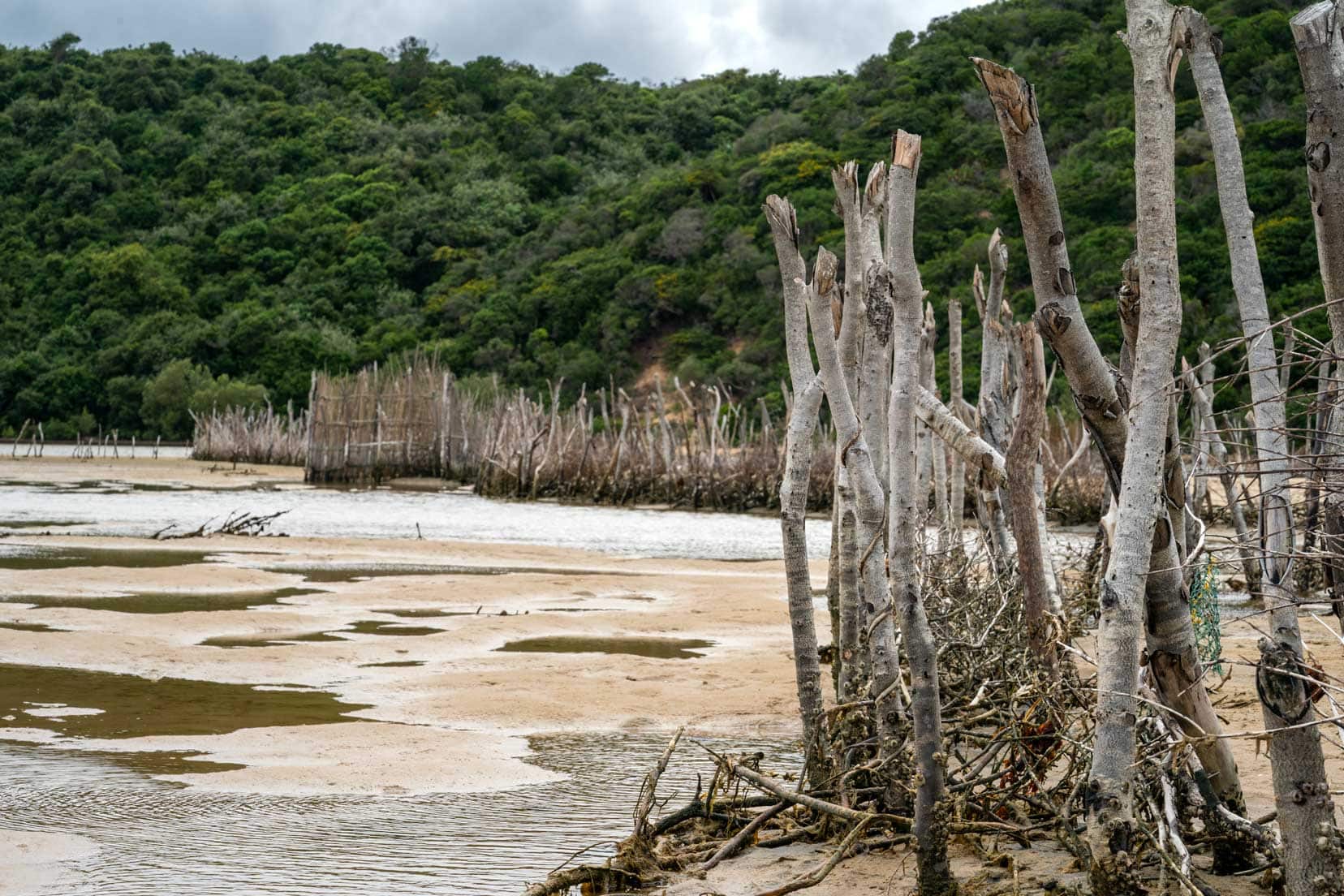
15. Take a Kosi Bay Mouth Kayak and birdwatching Tour
Explore the mangroves, birds and fish life in Kosi Bay Mouth Estuary on a kayak tour with a local Thonga guide.
You may see fish eagles, palm nut vultures, mangrove kingfishers and flamingos. You’ll also learn about the local Thonga culture and paddle through the traditional fish kraals.
16. Visit Tembe Elephant Park
Tembe Elephant Park is about an hour’s drive from Kosi Bay and worth a visit to see some of Africa’s largest Elephants in this 300 square kilometre reserve.
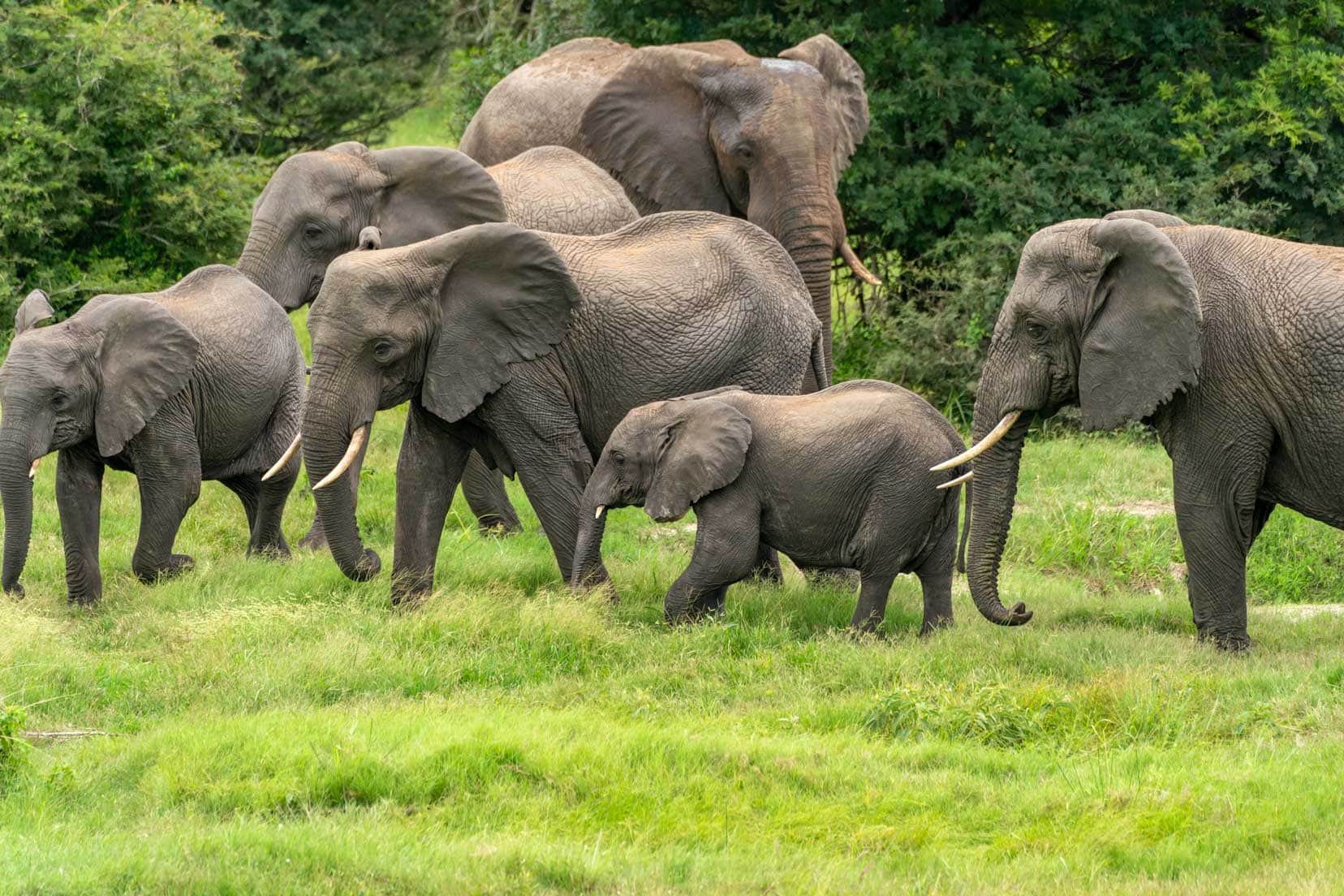

Only 15 cars are allowed into the park per day, so make sure you arrive early.
We arrived at 11.30 am, oblivious to this rule, and after the hour-long drive, were told we couldn’t enter as we were the 16th car.
It’s also worth noting that you must have a 4×4 vehicle for entry.
We aren’t ashamed to say we pulled our trump card, saying we had come all the way from Australia to see the Tembe elephants. The guard at the gate seemed reluctant initially, but fortunately, after studying Lars’ Australian driving licence, he let us in.
We gave him a packet of colouring pens for his grandchildren as a thank you. We keep a pack of them as bargaining chips when police blocks get tricky.
It was a ploy recommended to us by local South Africans. (Sometimes, the police may pull you up over random things and maybe expect a kickback in some form or another. A can of cold Coke is also another recommended sweetener!)
It isn’t too expensive to visit the elephant park as a visitor. It cost us 390 Rand (about $21 USD or $35 AUD).
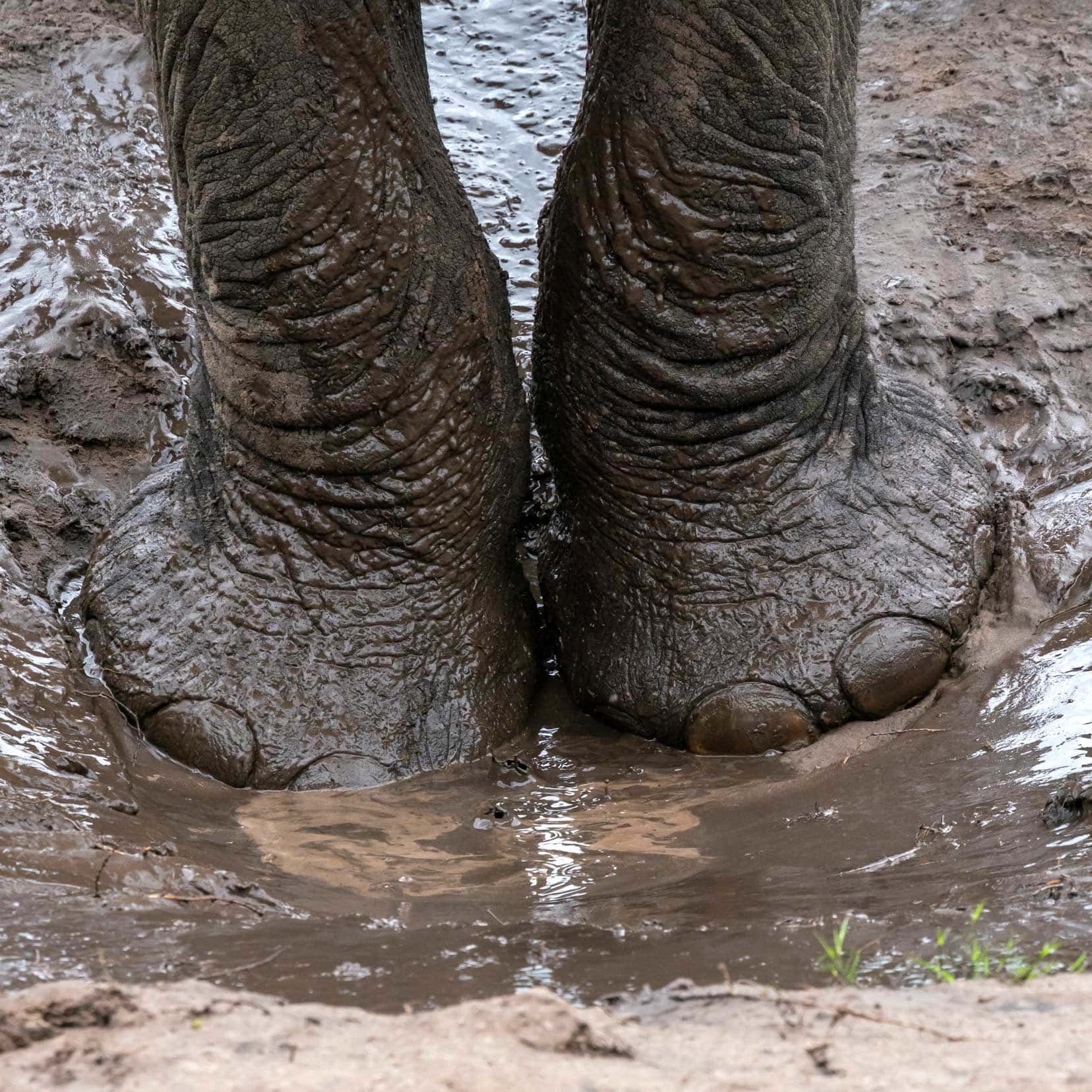
Throughout the park, there are one-track sandy roads, which does make it tricky if you meet someone coming in the opposite direction — and it is then that you realise why it is good that cars are limited.
Even so, we still found ourselves reversing several times and struggling to find somewhere not too bushy to haul ourselves off the road to make space for oncoming cars.
You could spend all day traversing the many tracks in the park, but we recommend including the hides. We saw elephants at both hides we visited.
In the park, we saw lots of nyalas (a type of antelope) and even had the privilege of watching a martial eagle preen itself.
It wasn’t until we were leaving that we encountered elephant herds on and around the road. In fact, a big tusker started up the road towards us, so we had to keep moving back to keep our distance.
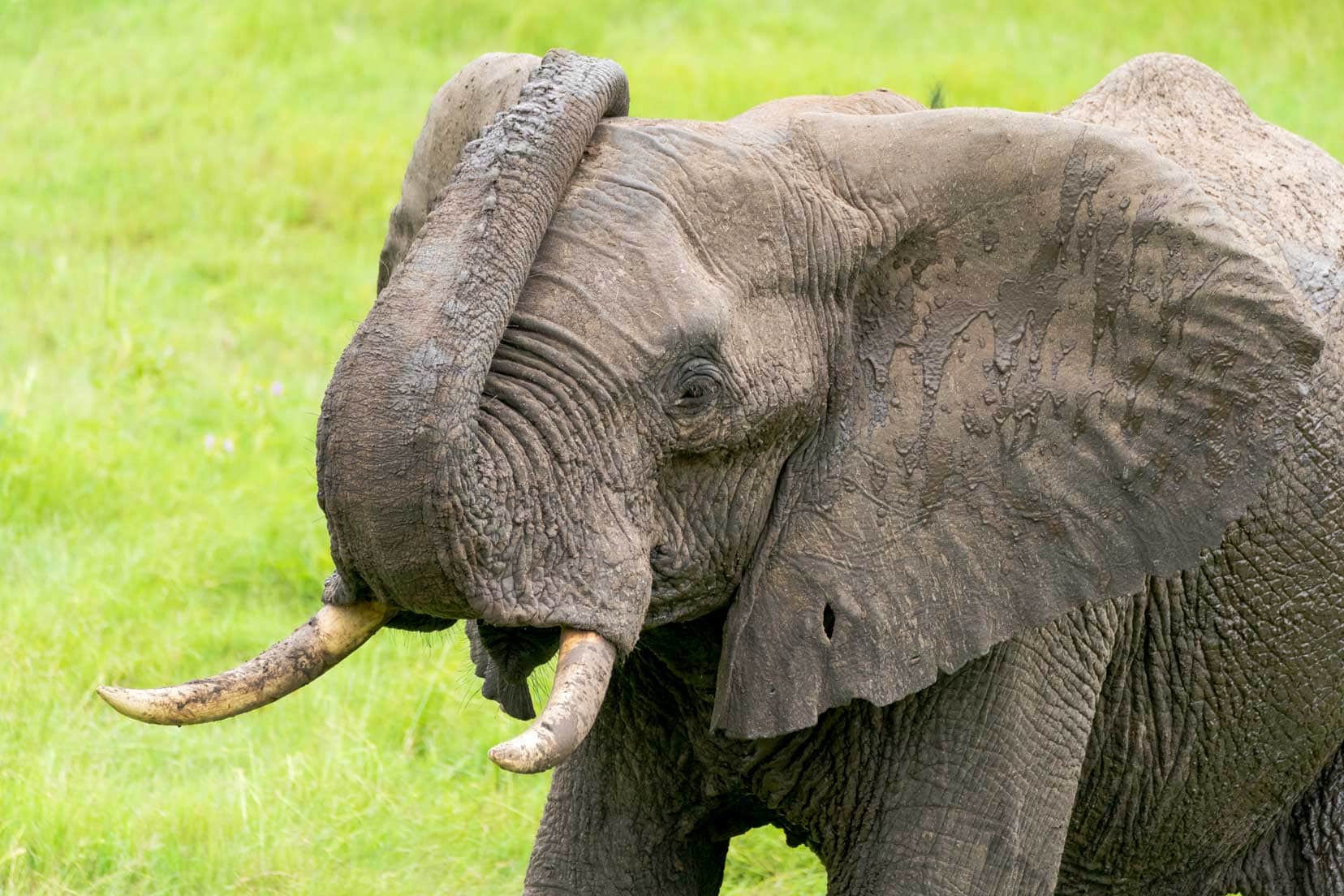
iSimangaliso Wetlands Activities: Know Before You Go
Here are a few points to note that will make visiting the area and your iSimangaliso Wetland reserve activities more enjoyable.
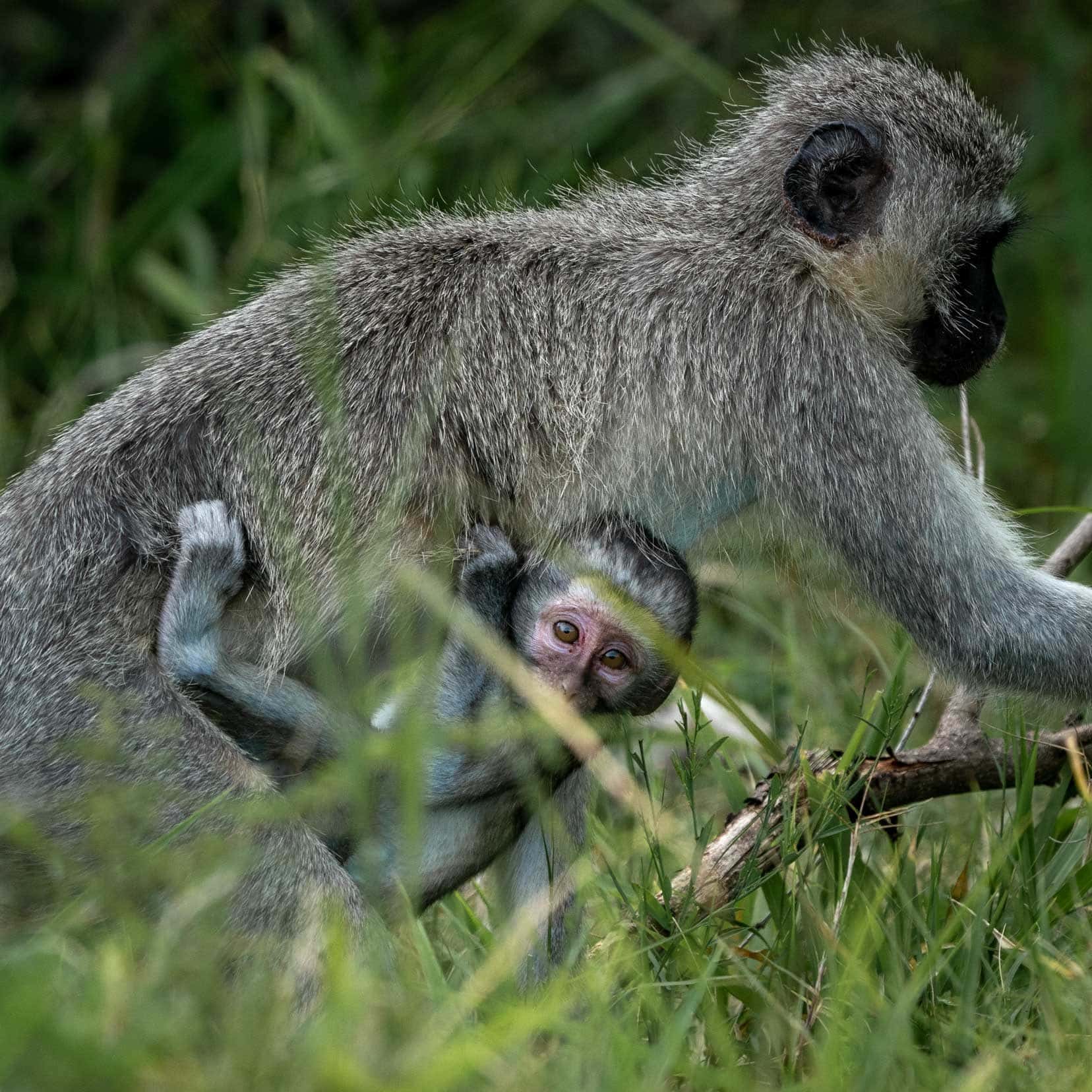
Health Information for iSimangaliso Wetland Activities
The iSimangaliso area is a low-risk malaria area, but as it is a wetland, plenty of mozzies keep you busy swatting. Therefore, make sure to have plenty of mosquito spray.
Wear light-coloured clothing with long sleeves and pants in the early morning and evening when the mozzies are most active.
We took a prophylactic against malaria (doxycycline), just in case. You need to start taking this two days before any possible exposure.
The water at the iSimangaliso campsites and lodges is drinkable.
iSimangaliso Park Entrance Fees
If you are wondering about the iSimangaliso wetland park prices, you will want to check out the latest tariffs here. The price varies depending on the gate that you enter and where you are driving.
Most of the lodges and campsites can be accessed without a permit, but once you drive into an area of the park, for example, on the eastern or western shores around St. Lucia Lake and the Kosi Bay Lakes or Estuary mouth, you need to pay daily for an entrance permit.
The permit office is at KZN Ezemvelo at Third Lake, Lake Kuhlange – you must buy a permit before entering the park. If you want to enter the gate early, you can buy one the day before. (Note that you cannot buy a permit at the gate itself)
The drive north from the permit office to the Kosi Bay Mouth gate entrance is about 30 minutes. Then, another two kilometres to the parking place for Kosi Bay Mouth.
- iSimangaliso Wetland Park entrance fee 2023: It depends on which gate you enter and will exit.
- Permit Office Opening times: 8 am – 4 pm
- Gate Opening Times: 6 am – 6 pm
From 01.04.2024, the Rhino card will still provide free entry to all Ezemvelo Wildlife Parks except Isimangaliso Park.
The Best Time of Year to Visit iSimangaliso Wetlands
The best time of year to visit iSimangaliso Wetlands depends on your preferred ideal conditions.
For us, visiting in December, during the peak season and school holidays, it probably wasn’t the best choice. But we didn’t realise how popular the area was when booking.
If you are looking for hot weather and a vibey atmosphere, this time of year may suit you. If you prefer a quieter visit, however, and the weather to have less intense heat, then May, June and July are the best months to visit.
That time of year also has less wind and fewer mosquitoes, and campsites and accommodations won’t be so booked out.
If you are visiting in the summer, remember to take precautions against mosquito bites.
Getting to iSimangaliso Wetland Park
From Durban, St. Lucia is about a 3-hour drive, and Kosi Bay is a 5-hour drive from King Shaka International Airport just north of Durban.
From Johannesburg to St. Lucia it’s about 8 hours, and to Kosi Bay, about the same.
🏨 The Welveriend B&B at Piet Retief: The perfect halfway stop.
Travelling from Johannesburg to Kosi Bay or St. Lucia?
We overnighted here twice.
✅ Great owners, ✅ Beautiful gardens
✅ Fantastic breakfast included
Accessing iSimangaliso Park Gates
The iSimangaliso Park gates are accessible from the N2 and the R22.
- The southernmost Park entrance is Maphelane, accessible from the Kwambonambi junction.
- Turn off the N2 at Mtubatuba to visit the Eastern Shores and Western Shores sections (and the town of St Lucia).
- The R22 branches off the N2 at Hluhluwe, with directions showing the way to the False Bay gate.
Further north along the R22, the D820 on the left leads to uMkhuze’s Ophansi Gate
- The turnoff from the R22 is at Mbazwana, the gateway to Sodwana Bay, Lake Sibaya, and the Coastal Forest sections.
- Kosi Bay is accessed via the town of Manguzi/KwaNgwanase.
General Driving Conditions in and near iSimangaliso Wetlands
You will need your own car – and we recommend a 4×4 to make the most of your time there.
🚘 Need to hire a vehicle? Check out the best prices from Discover Cars
Driving in South Africa requires you to have your wits about you. We found driving in Kwa-Zulu Natal that the road conditions tended to be poor, with many potholes.
You must also watch out for the many speed bumps as you drive through towns. Many aren’t sign-posted by the side of the road, and the zebra markings across the top are practically invisible.
In addition, you will likely encounter goats and cows on the road as they wander freely, oblivious to oncoming traffic.
Added to dodgy road conditions, the driving skills of many on the road are low.
We were regularly stunned at some of the driving antics—one of the worst being when cars are overtaking, as they have no regard for anything coming the other way! A two-lane road can quickly become three or four lanes.
If you are able to ask a local for the best roads to drive from certain towns, do so. They will know the up-to-date situation regarding road conditions and any targeted crime areas.
Driving to Kosi Bay
On the way to Kosi Bay, you will pass through the town of Manguzi. It is a bit of a bottleneck for traffic and is manic, with cars lining up at gas stations and market stalls on the side of the street with people meandering across the street.
It is less hectic if you drive through before 10 a.m. This is the last place to stock up on supplies or gas before you enter Kosi Bay.
Some of the campsites and lodges can be accessed with a two-wheel drive, but do check before you book. You could then walk to the lakes.
The tracks around Kosi Bay can be difficult to navigate. They are a maze of sandy tracks, and it is easy to find yourself on the wrong track and in deep sand.
Even using both Maps.me and Google Maps, we still took the wrong track a few times!
St. Lucia: Where to Stay
St. Lucia, in the southern part of the wetlands, is a popular tourist destination with various chalets and rental accommodations available.
🏕️ Camping in St.Lucia
We stayed at Sugarloaf Campsite, St.Lucia’s main campsite. It has many sites but gets booked out very early in peak season.
🏡 Guest Houses and Lodges in St.Lucia
If you aren’t camping, the following guest houses and lodges have excellent reviews.
African Ambience Guest House B&B
- Rating: 9.7 for a two-person trip
- Features: Outdoor pool, free wifi, close to the beach, private amenities, bar, BBQ, breakfast included, free parking
- Guest Reviews: “Everything was high quality” – Richard, UK | Peaceful, quiet, lovely breakfast… will definitely be back“- Barry, South Africa
St Lucia Lodge
- Location Rating: 9.6 for a two-person trip.
- Features: Overlooks St. Lucia Estuary, nestled within a lush tropical garden, self-catering studio with fully equipped kitchen, private bathroom, free wifi and parking.
- Guest Reviews: “Spotless cottage, well-maintained garden” – Sarah, Germany | “Beautiful piece of paradise, outstanding service” – Stuart, South Africa.
Parker’s Cottages
- Location Rating: 9.2 for a two-person trip.
- Features: Outdoor swimming pool, air-conditioning, private bathroom with free toiletries, various breakfast options, tea/coffee maker in all rooms, bar.
- Guest Reviews: “Comfortable room, really good breakfast” – Yurifrey, Italy,
Kosi Bay: Where to Stay
We stayed in two very different campsites at Kosi Bay: Casitas and Zlondi.
🏕️ Camping at Kosi Bay
Kosi Bay Casitas
- Our Experience: This camp was very popular and busy during peak season, with a festive atmosphere. If you’re looking for a quiet camp, avoid it over the holiday period.
Unfortunately, as we were visiting in one of the busiest times of the year, the camp was full of holidaymakers, and with it also being the Christmas period – everyone was in the party mood.
Therefore, it wasn’t the quietest camp we could have chosen! As early risers, we go to bed early, and this camp just didn’t suit us. However, if you enjoy the holiday/party vibe, this would be a great place to camp.
I would imagine it to be much quieter in the off-peak season. - Rating: 8.2 by Couples
- Features: Swimming pool and restaurant on-site, close to 3rd Lake (Lake Nhlange), 14 camp stands and nine chalets
Zilondi Bush Camp
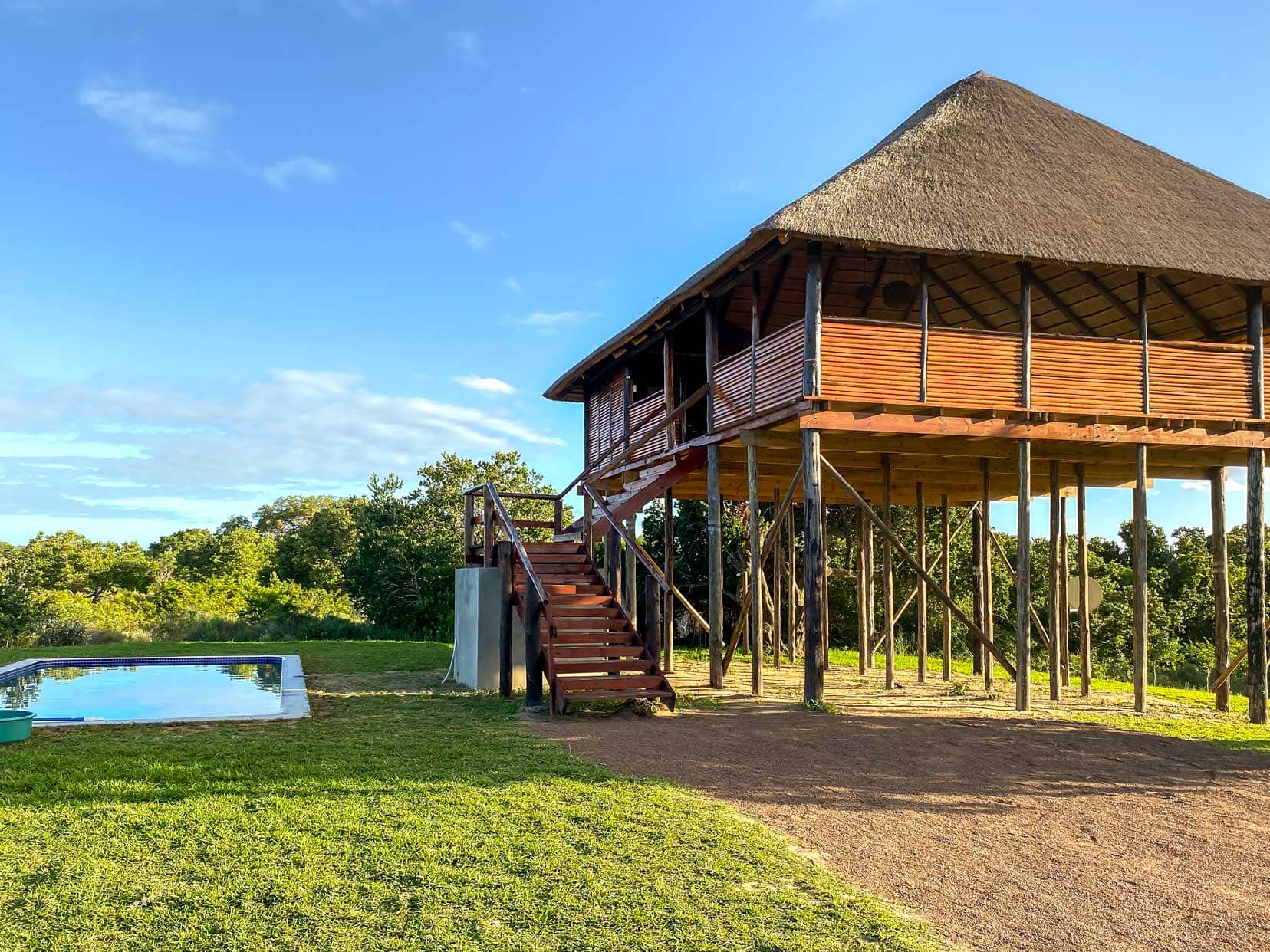
- Our Experience: This camp is suitable for those who prefer a quieter bush camping experience. It was rustic, with campsites spaced well apart, and suited to those who prefer bush camping.
Saying that, though, there were still all the normal ablutions, with water and electricity available, as well as a small swimming pool and viewing deck overlooking Zilondi Lake. - Features: Rustic bush camping, normal ablutions, water, electricity, swimming pool, viewing deck overlooking Zilondi Lake
🏡 Guest Houses and Lodges in Kosi Bay
Kosi Bay Resort
- Rating: 8.4 by Couples
- Features: Short walk from Kosi Lake, kitchen amenities, buffet breakfast, swimming pool, BBQ facilities, restaurant, sun terrace, garden
- Guest Reviews: “Super helpful and attentive staff, spacious rooms” – Van, UAE | “Heaven on Earth, friendly staff” – Gaby, South Africa
Chinderera Eco Lodge
- Rating: 8.9 by Couples
- Features: Free parking, timber-framed & solar-powered, various breakfast options
- Guest Reviews: “Wonderful accommodation, hosts, and food” – Marie, Germany | “Beautifully built lodge, divine cuisine” – Carin, South Africa | “Hidden place in forest, outstanding hosts” – Arnold, Netherlands
Frequently Asked Questions about iSimangaliso Wetland Park
1. What is the best time of year to visit iSimangaliso Wetland Park?
The park can be visited year-round, but wildlife sightings are often best during the drier months from May to September. Turtle spotting tours are available from mid-November to February.
2. Are there any guided tours available in the park?
Various guided tours are available, including walking safaris, snorkelling adventures, and kayak tours.
3. Is iSimangaliso suitable for family trips?
Absolutely! iSimangaliso offers a range of family-friendly activities, from beach outings to wildlife safaris.
4. Do I need a 4×4 vehicle to explore the park?
While some areas are accessible by regular vehicles, a 4×4 is recommended for certain parts of the park.
5. Are there any accommodation options within the park?
Yes, various accommodation options range from luxury lodges to camping sites within the park.
6. What wildlife can I expect to see in iSimangaliso?
The park is home to a diverse range of wildlife, including the Big Five, hippos, crocodiles, and a variety of bird species.
7. Do I need to be aware of any safety guidelines while visiting?
It’s important to follow park rules and guidelines while visiting Isimangoliso Wetlands, especially regarding wildlife interactions. It’s advisable to keep a safe distance from animals and not to feed them.
Activities to do at iSimangaliso Wetland Park … That’s a Wrap
There are plenty of things to do at iSimangaliso Wetland Park, and this information will make planning your iSimanagliso activities much easier and hassle-free.
If you have any questions, please let us know or leave a comment, and we’ll do our best to help or direct you to someone local who can.
We’d love to hear from readers who have visited the area. Send us your pictures and tell us your favourite part of the wetlands.
‘One day or Day one … you decide
Pin and Save on Pinterest
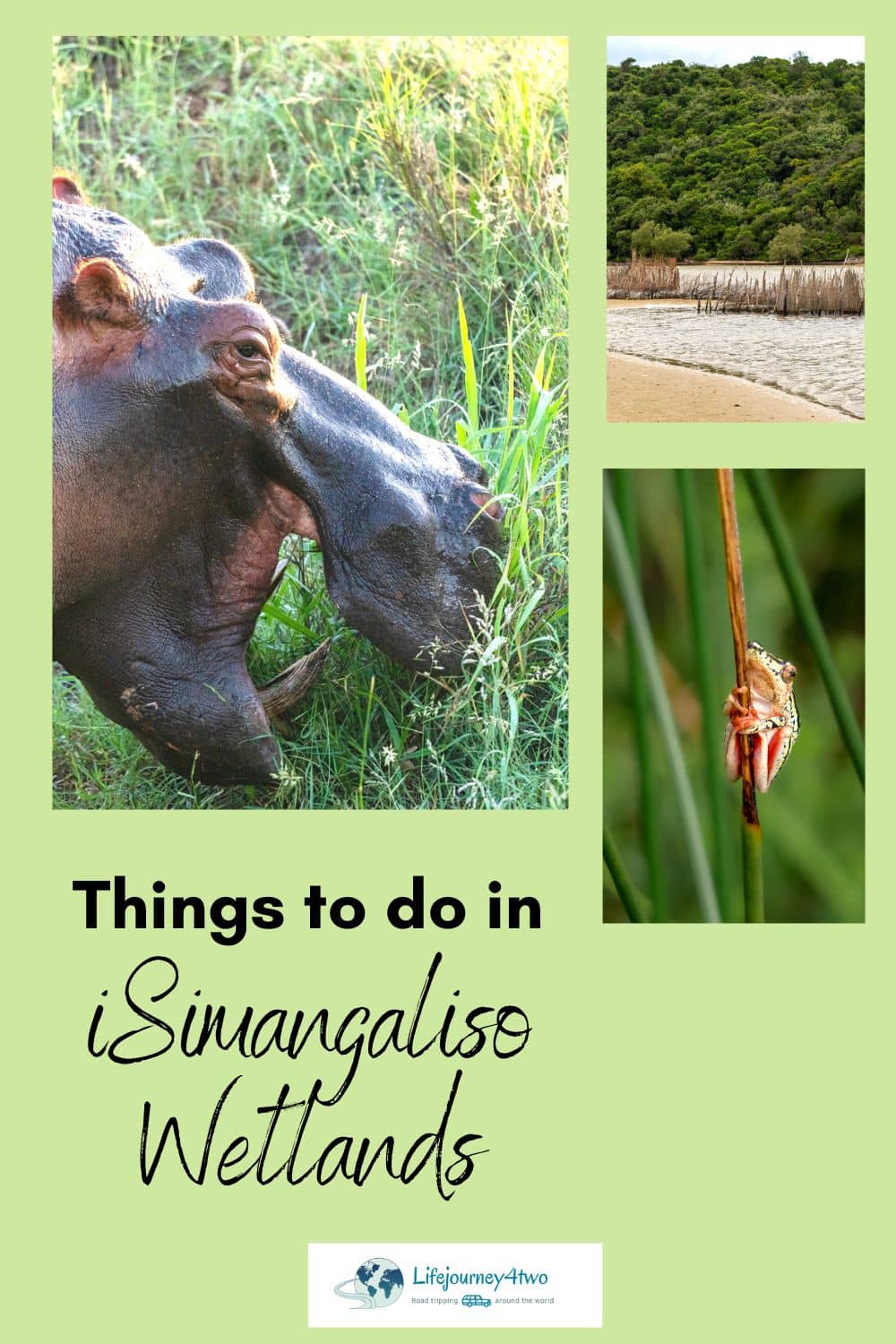
READ MORE:
- Animals in Greater Kruger, South Africa
- The Best Accessories to Take on Safari
- Explore South Africa Guide
Planning Your Travels?
These are the travel resources we recommend and use when planning our trips.
- 🚘 Car Hire: We use DiscoverCars.com
- Motorhome/Campervan Rental: We highly recommend the Motorhome Republic
- 🪪 Order your International Driver’s Licence online here
- 🛏 Book Accommodation: We use Booking.com to find accommodation that suits our budget
- 🐶 Pet Sitting/Pet Sitters: Check Out TrustedHousesitters here (Use our Discount code: LIFEJOURNEY25 for 25% off. )
- Activities and Experiences: Get Your Guide and Viator
- Travel Insurance: Safetywing or World Nomads
- 🥾 Travel Gear and Accessories: Check out our top picks here — Lifejourney4two page on Amazon
For a more thorough list, visit our Travel Resources page here.

